













Three conditions must be fulfilled to achieve controlled nuclear fusion: very high temperature (to provoke high-energy collisions); sufficient plasma particle density (to increase the likelihood that collisions do occur); and sufficient confinement time (to hold the plasma, which has a propensity to expand, within a defined volume).
In ITER, fusion will be achieved in a tokamak device that uses magnetic fields to contain and control the hot plasma.
ITER is designed to achieve and sustain fusion reactions at a scale that will enable the study of a controlled “burning,” or self-heating, plasma. However, achieving sustained fusion reactions is only one piece of the puzzle. To harness fusion as a practical energy source, several key technological challenges must be addressed—including testing neutronresistant materials, managing heat exhaust, developing the tools for remote maintenance, and testing the breeding, inside the vessel, of tritium fuel. ITER—an international collaboration between China, Europe, India, Japan, Korea, Russia and the United States— will contribute to addressing each of them, in an integrated manner, but further R&D is a prerequisite to delivering a credible design for a next-phase demonstration reactor.



ITER IS DESIGNED TO ACHIEVE AND SUSTAIN FUSION REACTIONS AT A SCALE THAT WILL ENABLE THE STUDY OF A CONTROLLED “BURNING,” OR SELF-HEATING, PLASMA.






An “international project that aims to demonstrate the scientific and technological feasibility of fusion energy for peaceful purposes, an essential feature of which would be achieving sustained fusion power generation.” (From Article 2 of the ITER Agreement)
Q≥10
ITER’s programmatic goal, signifying that fusion output of at least 500 MW is produced in the machine from 50 MW of injected heating power.
The People’s Republic of China, the European Atomic Energy Community (Euratom), the Republic of India, Japan, the Republic of Korea, the Russian Federation, and the United States of America are the seven signatories to the ITER Agreement.
Signed by all Members in November 2006, the ITER Agreement establishes the ITER Organization and defines the joint implementation of the ITER Project.
Established to construct, operate, exploit and de-activate the ITER facilities in accordance with project objectives; encourage the exploitation of the ITER facilities by the laboratories, other institutions and personnel participating in fusion energy research and development programs of the Members; and promote public understanding and acceptance of fusion energy (Article 3). The ITER Organization is licensed as a nuclear operator under French law.
The governing body of the ITER Organization. The Council is responsible for the promotion and overall direction of the ITER Organization and has the authority to appoint the Director-General; to approve the total budget for various phases of the project, the annual updates of the Project Plan and Resource Estimates and (correspondingly,) the annual budget of the ITER Organization; and to decide on the participation of additional states or organizations in the project. (Article 6)
Each Member has created a Domestic Agency to fulfil its procurement responsibilities to ITER. These agencies employ their own staff, have their own budget, and contract directly with industry.
The Science and Technology Advisory Committee (STAC) advises the ITER Council on science and technology issues that arise during the course of ITER construction and operation
MAC
The Management Advisory Committee (MAC) advises the ITER Council on management and administrative issues arising during the implementation of the ITER Project.
FAB
The Financial Audit Board (FAB) undertakes the audit of the annual accounts of the ITER Organization. (Article 17)
MANAGEMENT ASSESSOR
A Management Assessor is appointed every two years by the ITER Council to assess the management of the ITER Organization activities. (Article 18)



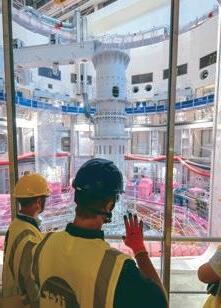

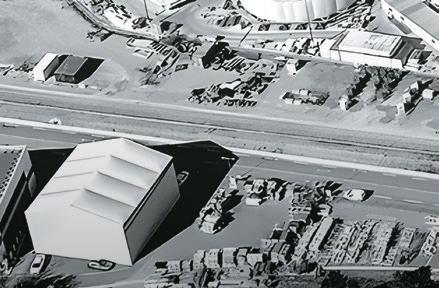
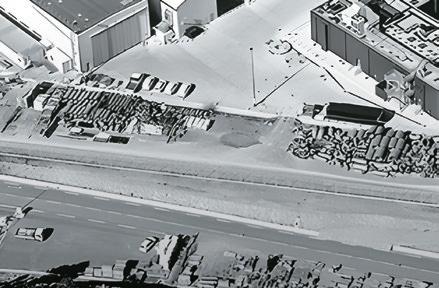

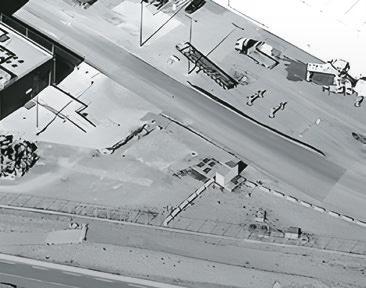


I would like to commend the ITER Organization for its achievements throughout 2023. The ITER Council acknowledges the extensive work of the ITER Organization on the preparation of the new project baseline. The 2016 Baseline is no longer workable because of schedule slippages that have accrued due to pandemic-related supply chain issues, delays in the manufacturing of first-ofa-kind components, technical challenges with the assembly of these components, and quality issues affecting vacuum vessel sectors and thermal shield cooling pipes. The Council welcomes that the new baseline proposal is being developed with the full cooperation of the seven Domestic Agencies, as the new baseline critically depends on the timely delivery of in-kind components with the required level of quality. The new baseline was presented to the ITER Council in June 2024.
The ITER Council also welcomes the important changes and reforms to improve construction delivery and project management carried out by the Director-General of the ITER Organization Pietro Barabaschi since his appointment. Under his supervision, the ITER Organization developed and validated repair strategies for the vacuum vessel sectors and thermal shield, permitting the signature of repair contracts and their execution. These strategies are essential for the restart of vacuum vessel sector subassembly activities.
In 2023, the ITER project made significant progress with the delivery of key components (e.g., central solenoid, poloidal and toroidal field coils) and the installation of others (e.g., sectors of the cryostat). The completion and delivery to the ITER site of all 18 regular toroidal field coils amongst the most complex ITER components and of an additional spare involved 6 out of 7 ITER Domestic Agencies, and clearly illustrate the international and collaborative character of the ITER project.
The project also progressed with important optimizations such as the use of tungsten for the blanket first wall material instead of beryllium. This change is expected to address concerns about beryllium, such as dust generation and toxicity, and to provide knowledge exploitable for future fusion reactors.

The ITER Council appreciates the ITER Organization’s renewed dialogue with the Nuclear Safety Authority of France on a new staged approach for licensing. This licensing approach underpins the three main phases of the new schedule that the ITER Organization put forward. The first phase, Start of Research Operation, aims at minimizing delays for the start of substantive research and will conclude with deuterium-deuterium operation. It will be followed by a first deuterium-tritium (DT1) phase, achieving Q≥10 at limited fluence, and a second DT2 phase at higher fluence, with longer pulses to fulfil the goals of ITER.
Progress was also made in 2023 to enhance the quality culture within the ITER Organization through project-wide surveys, interviews with experts from major projects like CERN and NASA, and meetings focused on quality management issues. The ITER Organization is moving towards a matrixed structure to streamline construction delivery, increase agility, and establish clear lines of responsibility and accountability. These reforms, carried out in agreement with the ITER Council, aim at fostering a culture of excellence and continuous improvement, necessary for project success.
The ITER Council supports the initiatives implemented by the ITER Organization throughout 2023 and will continue supervising and steering its activities to ensure that the project achieves its goals for the demonstration of the technical and scientific viability of fusion as a new energy source. ITER’s scientific and technological programme remains as relevant as ever for global fusion research and development and the national fusion programmes of the ITER Members.
Massimo Garribba
Luxembourg August 2024








As you will read in more detail in the pages that follow, the project is in the process of recovering from the technical setbacks that impacted two of our key machine components the thermal shield and the vacuum vessel sectors. Repair and re-manufacturing contracts launched in 2023 are progressing satisfactorily and we are on track to succeed. In an enterprise like ITER, with hundreds of thousands of first-of-a-kind components, it is not unusual to have problems of this nature; the more fundamental consideration is how well the project can recover and propagate the lessons learned. I believe that we have performed well in these two areas.
As the repair campaign progresses, the ITER Organization/ Domestic Agency project team has taken the time to fully revisit the path forward to completing construction and to operating the ITER machine. We have reviewed the most reliable information on component delivery, the timeline to key component repair, lessons learned since the start of machine assembly, and known licensing and technical risks to develop a plan, within the constraints that we have, that maintains programmatic goals while decreasing risks.
The resulting updated baseline proposal consolidates previously envisioned stages of assembly and operation while preserving the delivery of substantial research value in the mid-2030s. In the new ITER Research Plan, the previous “first plasma phase” of low significance has been replaced by a robust opening campaign, Start of Research Operation, where we perform research in plasma but also demonstrate full magnetic current/plasma energy and the integration of systems needed for industrial-scale fusion. Two deuterium-tritium phases a first Q≥10 phase achieved at limited fluence and a second achieved at high-fluence neutron production create the conditions for a more robust nuclear safety demonstration.
The new baseline also lowers technical risk by resequencing and optimizing systems installation and operation based on the most up-to-date scientific knowledge. Operating the divertor and the disruption mitigation system during firstphase operation, for example, allows us to gain experience with low operational risks. The decision to replace beryllium with tungsten for the armour material of the blanket first wall ensures that the science delivered by ITER experiments
will remain relevant to the global fusion community, and I am pleased to report that we are already receiving support for the validation of our design assumptions from our Member fusion communities. We are designing a facility to test some of our toroidal field coils and connected feeders at 4 degrees Kelvin and with full current to verify their electrical behaviour in the thermal conditions they will experience. And we are optimizing the assembly sequence of vacuum vessel and tokamak assembly to lower risks, particularly in the control of weld distortions.
In the new plan, the “mission elements” of the project will not be modified demonstrating the integration of systems needed for industrial-scale fusion operation and achieving a burning plasma with 500 MW of thermal fusion power for 50 MW input heating power (Q≥10) and 400-second pulses. The achievement of full magnetic energy in 2036 represents a delay of three years relative to the 2016 reference, while the start of the deuterium-tritium operation phase in 2039 represents a delay of four years. The full updated baseline (scope, schedule, cost and risk), presented last month to the ITER Council, will be our working reference while the ITER Members further evaluate the details. While they deliberate, we continue to seek every possible measure for cost containment.
I am very satisfied with the work that was done on the baseline proposal and the implication and cooperation that was received from all parties. Notwithstanding a challenging period, we have done our best to communicate with full transparency and we continue to maintain strong support from our stakeholders. In a complex project such as ITER, a baseline plan is essential to provide clear guidance, manage resources effectively, identify and mitigate risks, measure performance, control costs, maintain quality, manage changes and ensure compliance. I look forward to moving forward on this basis.
Pietro Barabaschi St. Paul-lez-Durance
July 2024
INTELLECTUAL PROPERTY
DECLARATIONS *











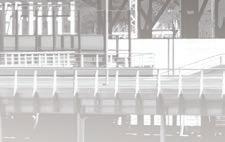
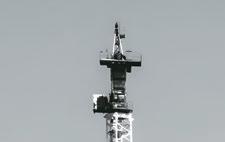
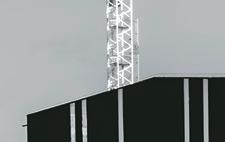

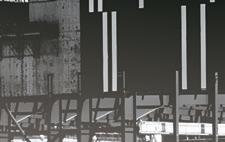

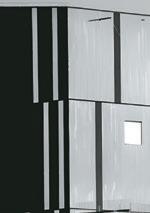




DECLARATIONS









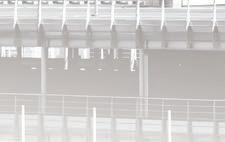





* Generated intellectual property declarations submitted by the ITER Organization and the Domestic Agencies through 31 December 2023.
PROCUREMENT ARRANGEMENT * SIGNATURES
91.7% IN NUMBER
97.9% IN VALUE
* A Procurement Arrangement is signed between the ITER Organization and the Domestic Agencies authorizing work for the development and manufacturing of the ITER installation.

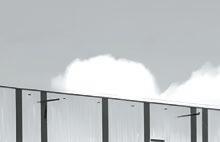
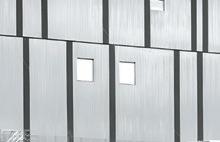

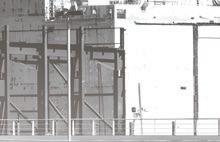













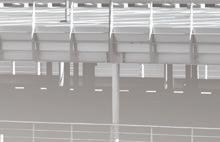




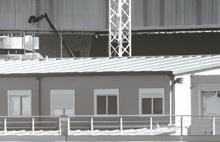



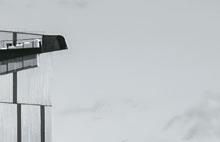
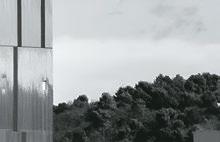

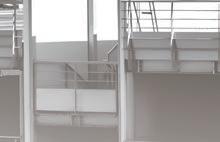


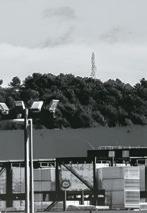

STAFF (See page 44)
1,102








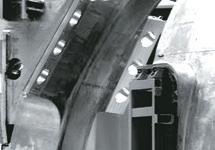



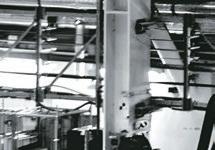

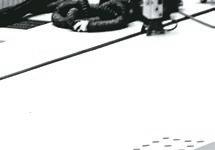
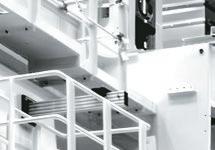


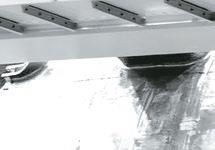

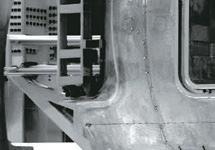
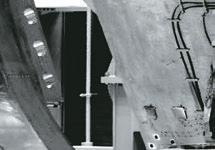
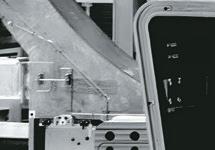



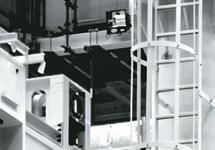


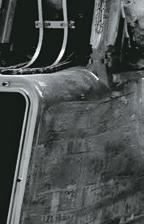

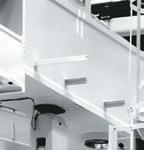


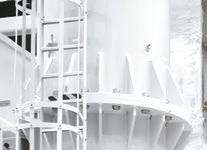

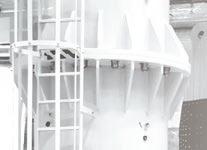



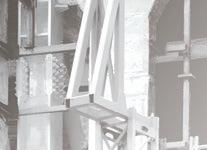

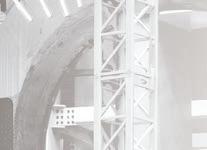


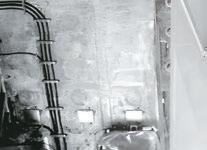


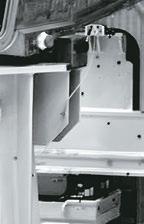


























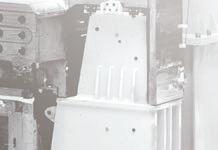














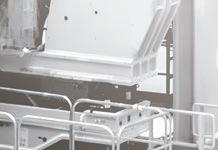















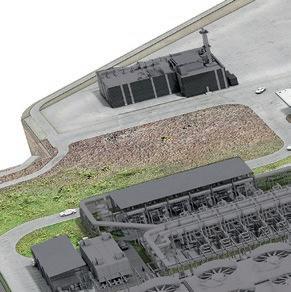






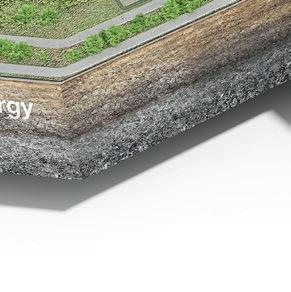
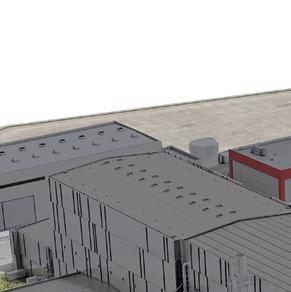




Civil structures and building services are constructed by the European Domestic Agency, Fusion for Energy, in conjunction with its Architect Engineer ENGAGE. Each area or building is handed over to the ITER Organization at an agreed level-of-completion milestone. Overall platform coordination is now managed by the ITER Organization.


Buildings in place
Buildings in progress
Buildings to come

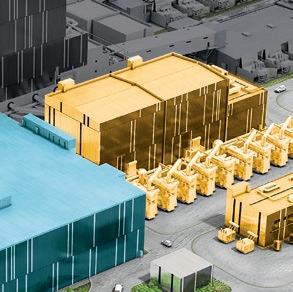





TOKAMAK COMPLEX

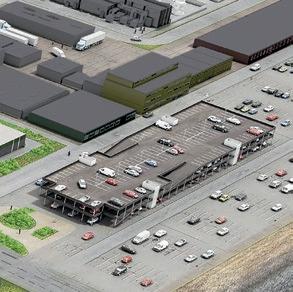



• Ducts, supports, cable trays, cables, piping installed
• Last large penetrations closed
• Tokamak Complex: civil engineering complete
• Tritium Building: last concrete pour in October
• Tokamak Building: nuclear doors completed
• Reinforcement added under central column tool
• Captive components for diagnostics installed
ASSEMBLY HALL
• Vacuum vessel sector module #6 re-installed on tooling
• Central solenoid: second module stacked



SITE SERVICES BUILDING
• Distributing cooling water and compressed air
COOLING TOWER ZONE
• Commissioning completed; system is operational
ELECTRICAL SWITCHYARD
• Reactive power compensation low-voltage commissioning
EUROPEAN WINDING FACILITY


• Preparation activities for sector #6 and sector #7 repair
CRYOPLANT
• All Group Y cryolines and warmlines installed and tested
• Commissioning activities ongoing
• Equipment installation in cryobridge
MAGNET POWER CONVERSION
• Sub-system testing and commissioning underway
• Busbar bridges under construction
MAINTENANCE TEST FACILITY
• (former Cryostat Workshop)

• Vacuum vessel sector #8 positioned for repair
RADIOFREQUENCY HEATING
• Mechanical component installation (electron cyclotron, ECRH)
• Baseline-related change: ECRH equipment to increase
STORAGE
• Additional storage shelter built
• Cryostat lid moved to outdoor storage
• Last production activities on coil PF3
• Building partially transferred for assembly activities
• Magnet cold test installation planned
• Exterior warehouse erected

• North megadoor completed
ITER HEADQUARTERS
• Scientific Data and Computing Centre: in progress
CONTROL BUILDING
• Installation of I&C cubicles and electrical equipment
• Installing partition walls and building services
NEUTRAL BEAM POWER SUPPLY



• Structures erected, cladding underway
EMERGENCY POWER SUPPLY
• Construction started
BUILDINGS TO COME HOT CELL COMPLEX
In 2023, the project identified and validated the repair strategies for the ITER vacuum vessel sectors and thermal shield and, on this basis, concluded repair and re-manufacturing contracts; the teams are now preparing to hand the components off to the companies. Sector module #6 was lifted out of the Tokamak pit and returned to tooling in the Assembly Hall, four toroidal field coils were detached from sectors #6 and #7 so that the sector bevel region could be accessed for repair, and the thermal shield sets were removed and surveyed. Execution of the repair lifecycle—from the start of repair work to the completion of repairs and the resumption of machine assembly—will be closely tracked by a dedicated task force. It is expected that sub-assembly activities will be able to re-start on two sectors in 2024.
REPAIRS – Two vacuum vessel sectors will be repaired vertically in the Assembly Building; a third will be repaired in a horizontal position in the former Cryostat Workshop. Repairs to recover nominal geometry will be a combination of weld build-up and re-machining; to this end, the qualification of procedures and tools is ongoing and test specimens (“coupons”) will be subject to detailed metallurgical analysis and mechanical testing. Repair of sectors #7 and #6 in sub-assembly tooling are expected to be finalized in August and October 2024 respectively, allowing module assembly to resume. For the sectors not yet delivered to the ITER site, deviations from nominal in the bevel joint region from the same root cause (welding deformation) have been mapped for in-factory repair. To resolve issues with the cooling circuit of the vacuum vessel thermal shield, seven sets will be repaired by removing old cooling pipes

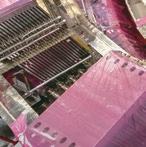






and re-welding new ones, while two other sets will be completely refabricated; contractors have already started their activities. The decision to repair elements of the support thermal shield on site has been made, while the strategy for the in-pit repair of the lower cryostat thermal shield is still in development.
ASSEMBLY AND INSTALLATION – While repair of the vacuum vessel and thermal shield are underway, assembly and installation activities continue to progress inside and outside of the Tokamak Complex. Of approximately 100 segments of magnet feeders to be integrated at B2 and L3 level, 62 have been installed and work is advancing on the hundreds of highly technical joints that connect them. Teams are also creating the coaxial joints needed by the central solenoid stack in the Assembly Hall, where two modules of six are now in place. In the galleries of the Tokamak Complex, which was turned over to the ITER Organization in September after European Domestic Agency contractors completed all civil engineering works, teams are installing cryolines, warmlines, electrical busbars, cables, and piping on their associated supports. Three auxiliary cold boxes, designed to distribute cryogenic fluids from the cryoplant throughout the ITER machine, were also
installed late in the year. Mechanical and electric component installation continues in the radiofrequency heating building, the magnet power converter bays, the cryobridge and the Control Building. Also of note: all critical assembly and installation contracts have been revised and updated according to the recommendations of an expert panel of the ITER Council Management Advisory Committee. Multiple negotiations resulted in revised contractual conditions that optimize performance and reduce indirect costs.
CHANGES RELATED TO RE-BASELINING – The ITER Organization has worked with qualified industrial partners on a risk-reduction strategy for vacuum vessel in-pit welding, with the objective of better controlling weld deformations. The results of a study on nine-sector simultaneous welding will be reported next year. A complete update of the design of the Hot Cell Facility will also be necessary given some of the assumptions contained in the new operation plan (beryllium removed as plasmafacing material; lower dose rate in phase one deuterium-tritium operation). A pre-concept of the facility taking into account the revised requirements will be the object of a facility design review in 2024. Also as part of ITER re-baselining, a window of opportunity has opened for the testing, as a risk mitigation measure, of some of the ITER toroidal field coils at 4 Kelvin. The design of the magnet cold test facility, making use of some of the resources of the ITER cryogenic plant, has been completed and procurement is in progress. Finally, due to
a planned upgrade of electron cyclotron resonance heating (ECRH) from 20 MW to 67 MW, the Radiofrequency Building will revert to housing ECRH equipment only and a building for ion cyclotron equipment will be constructed.
MAJOR COMPONENT DELIVERIES – One of the longest-lead procurement programs of the ITER project—superconducting magnets—is coming to an end as five toroidal field coils, two poloidal field coils, and two central solenoid modules were delivered during the year. All 19 toroidal field coils are now on site; only one poloidal field coil and three central solenoid modules remain to be delivered. Delivery and acceptance of the five remaining vacuum vessel sectors—one from Korea and five from Europe—remain on the project’s critical path and any delay is a major risk to the schedule.
TECHNICAL COORDINATION – A major push to improve the technical quality culture in the project was conducted in 2023 through, first, a series of project-wide surveys and interviews with experts from other major projects such as CERN and NASA and, second, a four-day hybrid meeting in April on quality management issues in different technical areas. Designed as an open arena for discussion and problem solving, the Technical Coordination Meeting resulted in eight priority recommendations that will be promulgated across the project. A second edition is planned in 2024 with a focus on machine and plant assembly.
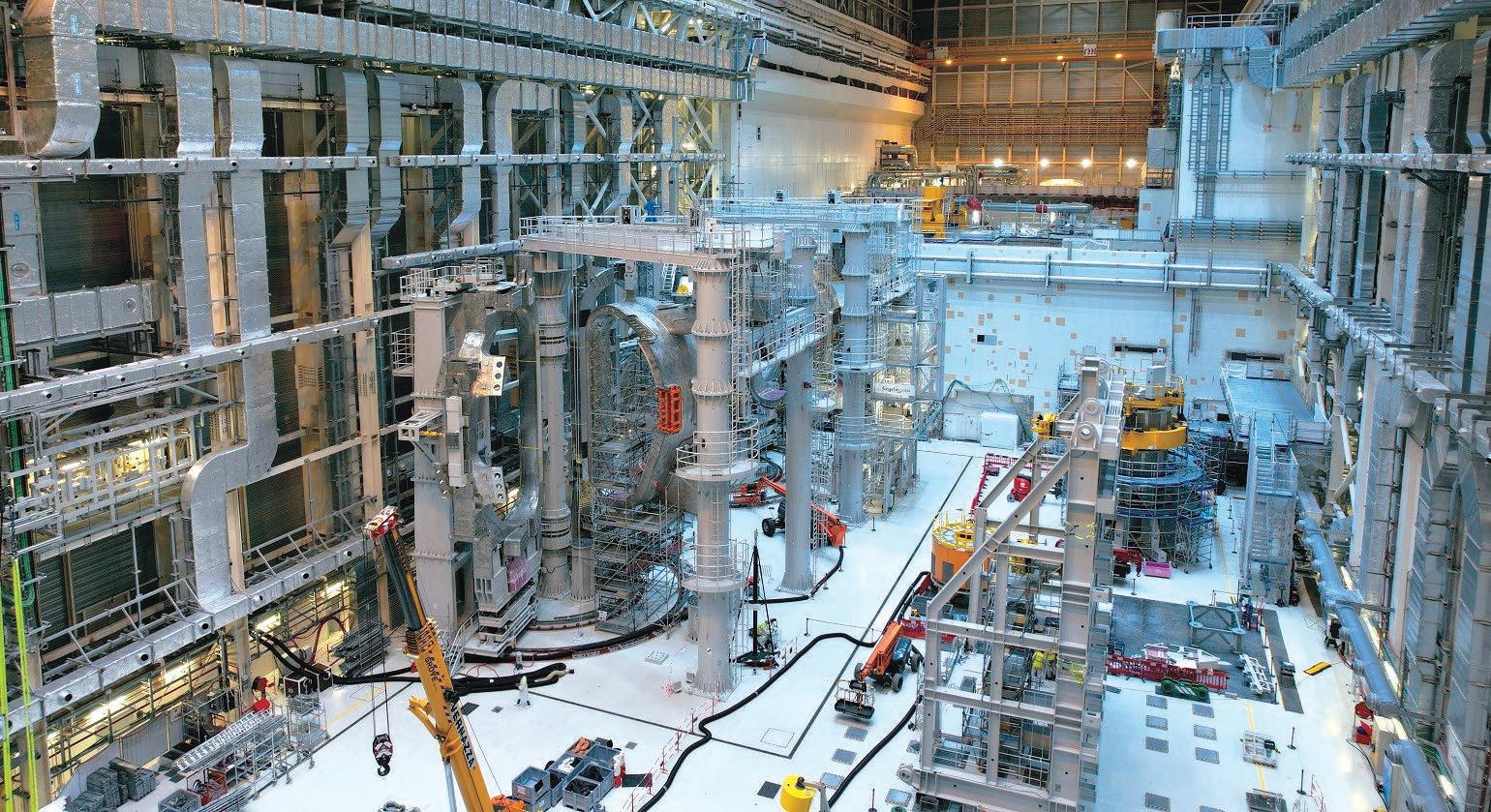

field coil #15 (Japan)
field coil #1 (Russia)
Gyrotron sets #3 and #4 (Japan)
Part of poloidal field winding facility handed over for assembly activities
top lid is moved out of building to storage
VACUUM VESSEL SECTOR MODULE #6 REMOVED FROM PIT
Sector module #6 is transferred to Assembly Hall tooling
Third central solenoid module (United States)
field coil #7 (Japan)
Poloidal field coil #4 (Europe)
field coil #19 (Japan)
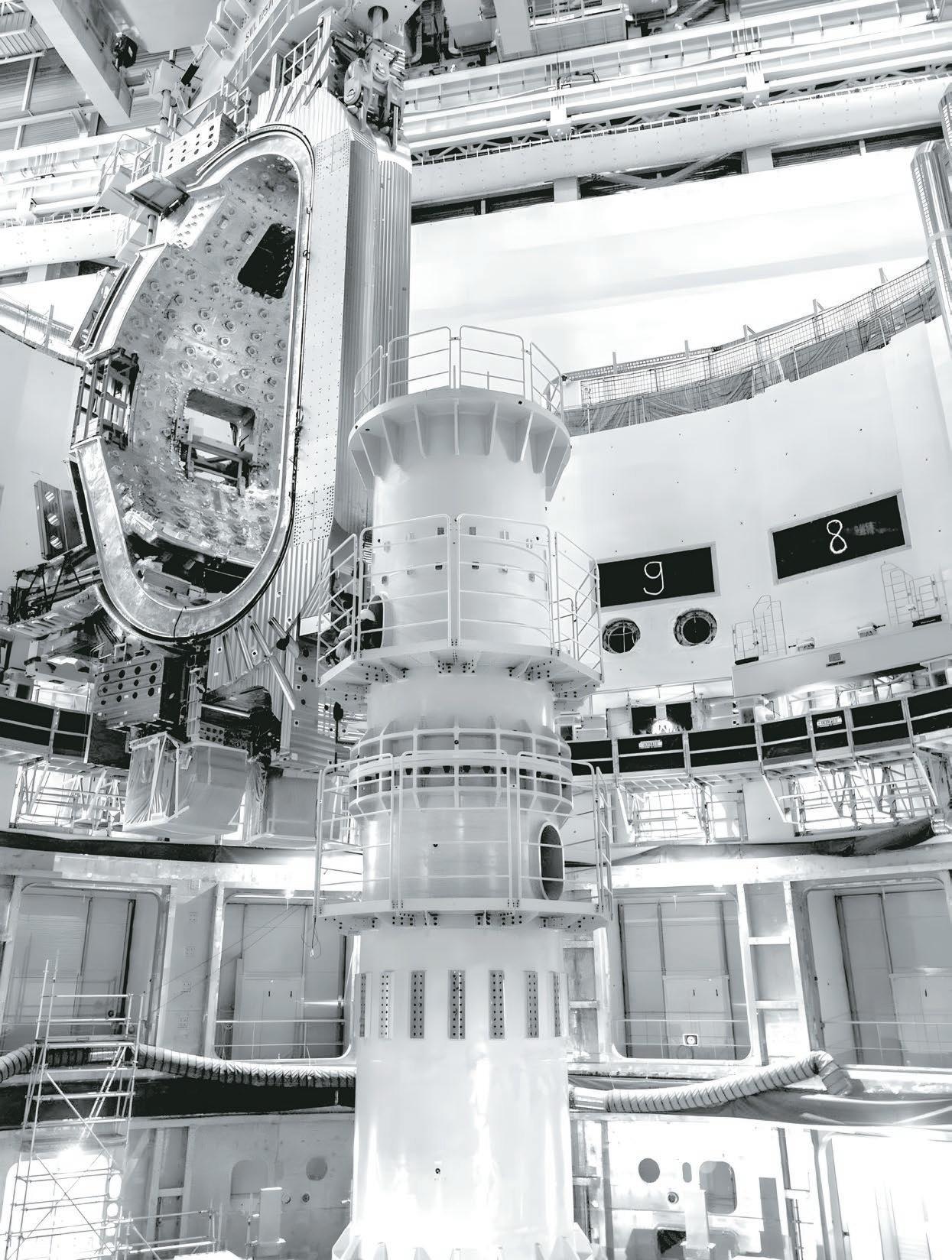
Although not foreseen in the original specifications
same equipment successfully.
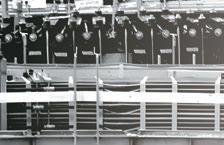








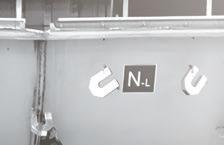


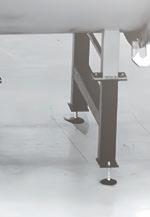






























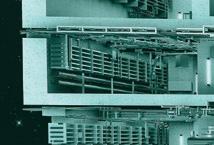



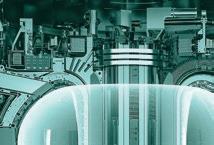



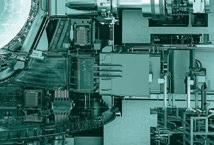



The multidecade ITER magnet procurement program is concluding, with 19/19 toroidal field coils, 5/6 poloidal field coils and 4/7 central solenoid modules now successfully received on site. Procurement activities for the blanket first wall are transitioning to reflect the change of armour material (beryllium to tungsten) decided in 2023. Remediation has been mapped out for the repair of vacuum vessel sector bevel joints and thermal shield cooling pipes, with a schedule that forecasts the restart of vacuum vessel sector sub-assembly activities in Q3 2024. As the ITER Project converges toward a detailed roadmap for assembly and commissioning—part of the revised ITER Baseline—the on-time delivery of the last major machine components remains critically important.


The final sector from Korea (#1) will arrive at ITER in 2024, while Europe’s first sector, #5, has entered the penultimate step before shipment—factory acceptance testing. Vacuum vessel port fabrication continues in Korea (equatorial and lower) and Russia (upper), and all in-wall shielding has been delivered by India. At ITER, the first complete module of the vacuum vessel was removed from the Tokamak pit in July and returned to tooling for dismantling. ITER’s industrial partner for the repair of vacuum vessel dimensional non-conformities is currently qualifying its solution and tools with mockups; activities will begin early next year in tandem on sectors #6 and #7, followed later by sector #8. Toroidal field coils and thermal shields have been removed from sectors #6 and #7, and the repair/ refurbishment of the vacuum vessel thermal shield has started.
The manufacturing of the ITER cryostat was completed in 2022; work remains to weld all the sections together in the Tokamak pit (India) and to complete the manufacturing of torus cryopump housing (India) and rectangular bellows (ITER). Of the four major sections of the ITER cryostat supplied by India, two have been installed in the pit (the base and lower cylinder) and two others (the upper cylinder and top lid) are stored on the ITER platform under protective wrapping. Nestled inside the lower part of the cryostat base is the cryostat thermal shield, which helps protect the superconducting magnets from the warm environment outside the machine. Like other parts of the ITER thermal shield, the cooling circuit of the lower cryostat thermal shield must be replaced due to concerns over corrosion cracking. Removing the piping in the constrained environment of the Tokamak pit is not possible; instead, a new set of piping will be clamped to the component’s surface.
The United States is delivering seven central solenoid modules (including one spare) produced from niobium-tin superconductors supplied by Japan. Two modules are currently stacked in the Assembly Hall on a dedicated assembly platform where the ITER teams are overseeing the creation and testing of superconducting electrical connections; two other modules delivered in 2023 will be stacked and aligned in turn. All specialized tooling has been completed and delivered and manufacturing is progressing on elements of the support structure.
In a major milestone for the ITER Project, all 18 regular toroidal field coils plus one additional spare have arrived on site. Following the signature of Procurement Arrangements in 2007 and 2008, six ITER Members (China, Europe, Japan, Korea, Russia and the United States) took part in the production of 100,000 km of niobium-tin superconducting strand and the subsequent manufacturing of toroidal field conductor. The superconductors were wound into winding packs and inserted into structural cases by Europe (10 toroidal field coils) and Japan (9 toroidal field coils plus 19 coil case structures) before shipment to ITER. The final coil arrived from Europe in December, approximately three and a half years after the first deliveries. While coil pairs had already been integrated during the subassembly process with vacuum vessel sector modules #6 and #7, they have now been removed and stored to permit sector repair. A magnet cold test facility is planned to test as many coils as possible at their operational temperature of 4 K as part of longer-term risk mitigation.
The smallest poloidal field magnet PF1, and the only one not under the procurement responsibility of Europe, was delivered by Russia in February. Europe has delivered two ring-shaped coils that are already installed in the Tokamak pit (PF6, manufactured in China under European contract, and PF5, manufactured on site); two other completed coils are in storage on site (PF2, completed in 2021, and PF4, completed this year). Europe is expecting to complete its final coil (PF3) in the first half of 2024, after which the European winding facility will be fully turned over to the ITER Organization for machine assembly activities.
The manufacturing of divertor cassette bodies—the intricately shaped base units that carry the plasma-facing divertor targets—is progressing under two contracts in Europe. Fifty-eight divertor cassettes (54 plus 4 spare) must be procured in all. Also in Europe, inner vertical target manufacturing is underway based on a first contract for 13 units; two other companies are taking part in qualification activities, which include the high heat flux testing of plasma-facing test assemblies at Russia’s Divertor Test Facility. Series manufacturing has also started in Japan for the first six outer vertical targets after prototypes were successfully manufactured and tested. Russia has completed the manufacturing of a number of plasmafacing elements for the final divertor target, the dome.
The three procuring agencies for the blanket first wall—China, Europe and Russia have been developing and testing beryllium-armoured full-scale prototypes. Following the decision by the ITER Organization in 2023 to replace beryllium with tungsten as the reference blanket first wall armour material, these procuring agencies are now in discussions about a tungsten pre-qualification program. The program will focus first on establishing material bonding processes, exploring tile manufacturability and tile size constraints based on thermal performance, with activities starting in 2024. No change is necessary to blanket shield block procurement; in China and Korea, where the manufacturing of 440 shield blocks is taking place, 55% of fabrication is now complete and the first units will ship in 2025.

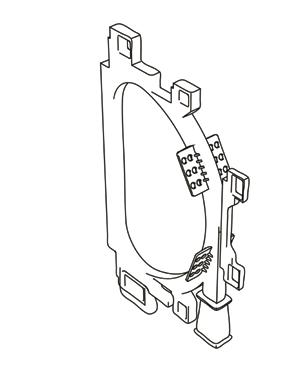
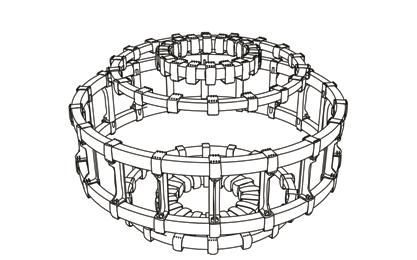



❱ The Chinese Domestic Agency has completed the fabrication of magnet support elements and clamps for the toroidal, poloidal and correction coil magnet systems—in all, over 1,600 tonnes of equipment. The last elements left the factory in November, concluding a procurement effort that began 10 years ago with qualification and prototyping activities. (1)
❱ The European Domestic Agency has concluded the firstphase final design of the cask and plug remote handling system (as related to machine assembly) and selected a supplier. Phase one of the cask and plug system will handle upper and equatorial vacuum vessel port plugs from the time of delivery in the Assembly Hall to installation in the ports. Phase two equipment will be designed for nuclear operation.
❱ The ITER Organization is designing and procuring a magnet cold test facility for installation in the partially vacated European winding facility. Testing at 4 K (-269 °C) reproduces 90% of the thermal and mechanical constraints a coil will be exposed to during its lifetime and validates part of the connected infrastructure (power supply, cryogenics, feeders, control-command). With tests requiring up to six months per coil, ITER teams plan to test one D-shaped toroidal field coil from each supplier (two Japanese and one European) as well as the smallest poloidal field coil PF1. (2)

❱ Europe has a framework contract in place for the procurement of the cooling manifolds that will distribute cooling water to the blanket modules through pipes arranged in bundles. Procurement is proceeding through task order. ©F4E (3)
❱ The ITER diagnostic team is designing and qualifying different types of windows for optical and microwave diagnostics. The windows must provide transparent “viewing” for the instruments and also ensure nuclear confinement. Silica, quartz, sapphire, zinc selenide and synthetic diamond are all candidate materials.

❱ The ITER remote handling and diagnostics groups are collaborating with external experts on the construction and testing of a prototype extraction tower to demonstrate the robotic replacement in the Hot Cell of diagnostic first walls and diagnostic shield blocks. Trials have begun following tower commissioning late in the year.
❱ Measuring just over 3 metres in height, cold valve boxes are equipped with cryogenic valves, relief systems, and pressure and temperature sensors specially designed to operate in the harsh ITER environment to distribute helium to the different parts of the ITER cryopumps. All eight cold valve boxes have now been delivered by Europe, corresponding to ITER’s two cryostat and six torus cryopumps. ©RI (4)


❱ ITER infrared diagnostics have optical components that transfer the infrared radiation emanating from the plasmafacing components to cameras located many metres away. The set of planned infrared cameras will monitor a large fraction of plasma-facing surfaces for “hot spots” that can be flagged to operators. At a workshop at ITER this year, specialists discussed the strategies for calibration that need to be developed, tested and incorporated in the design and operation plan of the diagnostics to ensure the fidelity of the measurements.
❱ After a two-year shutdown for upgrades, the SPIDER testbed at the ITER Neutral Beam Test Facility in Padua, Italy, is ready for commissioning and operation. SPIDER is a fullsize negative ion source that is designed to demonstrate all the critical aspects of the ion sources for ITER’s neutral beam injectors. Enhancement of the beam source (photo, centre) has set the stage for SPIDER to achieve the performance targets required by ITER in terms of ion beam density, and beam uniformity and divergence. (5)
❱ In August, poloidal field coil #4 (PF4) is removed from the facility where it was manufactured to be placed in storage nearby. A European contribution, this 24-metre-diameter coil was two years in the making. Only PF3, just as large, remains to be finalized to complete ring-coil procurement. (6)
❱ ITER India’s gyrotron test facility has been used to successfully validate a test gyrotron at ITER power and pulse requirements, a significant achievement that also confirms the successful commissioning of the megawatt-class, continuous wave test facility and the performance of the auxiliary systems. India is supplying two gyrotrons for ITER’s electron cyclotron heating system. (7)
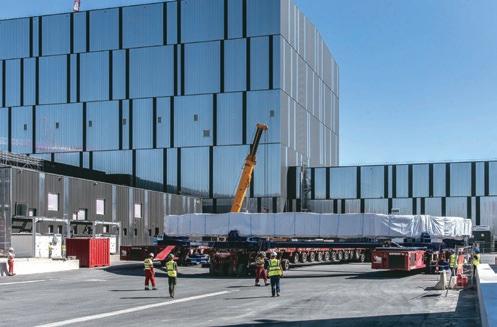
❱ Diagnostic port plug structures are “boxes” that contain diagnostics, integrated services, and other hardware that must be housed near the plasma in vacuum vessel ports. Manufacturing is underway now on the 23 structures that have been designed for diagnostics in upper and equatorial ports. Pictured is one flange—the part of the port plug structures that will be bolted to the vacuum vessel. (8)
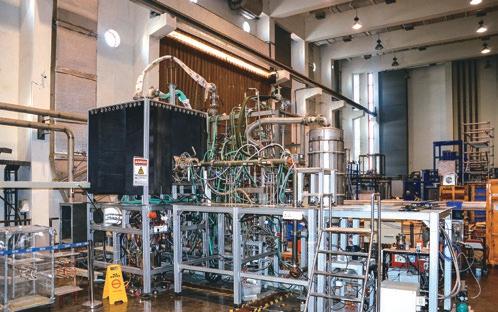
❱ The closer electronic and electromechanical components are located to the tokamak core, the more they will be affected by the magnetic fields generated by the machine. To avoid dysfunction, ITER teams are testing a sample of every type of component (valve, computer, pump…) in a new test installation on site—the static magnetic field test facility—to expose them in advance to the field that they can expect to receive plus 40% for ageing. (9)
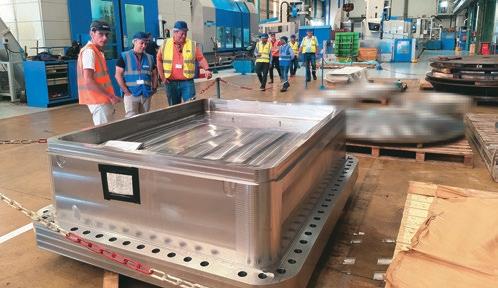
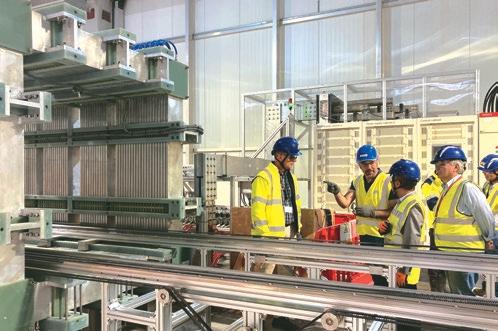






❱ Deliveries continue for the tokamak cooling water system, including a waste collection tank and a pressure relief tank that arrived in October. The United States is responsible for procuring this system, which includes over 100 major pieces of equipment, thousands of valves, and dozens of kilometres of piping.
❱ Russia delivers poloidal field coil #1 in February. This is the ring coil that will be installed last in the machine.(10)

❱ Serial production continues to progress in Europe on the torus and cryostat cryopumps and the shipment of the first production unit (photo) is imminent. These complex pumps took years of development to meet the very specific applications and requirements for ITER. All are based on cryopanels cooled with supercritical helium and coated with activated charcoal as sorbent material for imprisoning particles. (11)
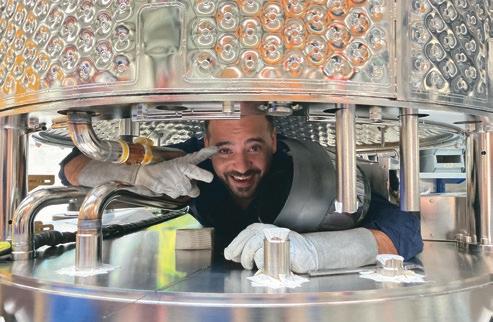


❱ The last of 18 AC/DC converter units to be supplied by Korea for the toroidal field magnet system shipped in November. ©KFE (12)
❱ The 18 megawatt-class helium compressors of the ITER cryoplant generate enough heat to keep the main facilities on the ITER platform at room temperature during the cold season. The project to recuperate this heat led to a EUR 5.5 million payback to the ITER Organization from French electricity supplier EDF and will create significant electricity savings going forward.
❱ Progress has been made on the diagnostic neutral beam, designed to detect helium ash in the plasma. Assembly of the beam source is underway and contractors are advancing on beamline components. The diagnostic neutral beam will first be operated on a test bed in India before being shipped to ITER.
❱ Five Indian-procured auxiliary cold boxes will receive cryogenic fluids from the cryoplant and redistribute them throughout the ITER machine from their final position in the Tokamak Building. Three have been received; the other two are expected next year. (13)
❱ Vacuum vessel sector #5 has passed leak tests in Europe. The tests, which assess leak tightness using nitrogen and helium, are the first in a line of factory acceptance tests that must be completed successfully before the component can ship. ©F4E.
❱ Two 110-tonne central solenoid modules reach ITER during the year from the United States. Modules 3 and 4 (photo) will be added to the central solenoid stack that is under construction in the Assembly Hall. (14)
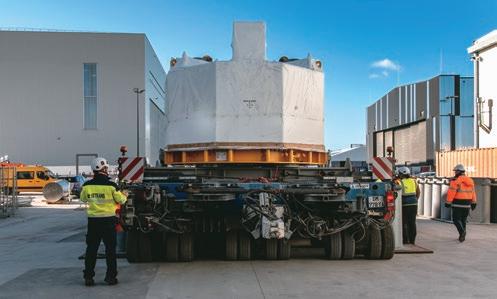
❱ Sixteen years after the first magnet Procurement Arrangements were signed, Japan and Europe deliver the final toroidal field coils of their procurement scope. The successful arrival of coils TF15, TF7 and TF19 from Japan and TF1 and TF18 (photo) from Europe during the year brings this procurement program to an end. All 18 D-shaped coils required by the machine are on site, as well as a nineteenth coil as a spare. (16)
❱ The vacuum vessel team in Europe charged with the procurement of five sectors of the ITER vacuum vessel has been exploring the benefits of using artificial intelligence (AI) to predict weld defects. Using data previously collected from vacuum vessel welds with defects to train an AI model, the team has created an AI tool that demonstrates conclusive results.
❱ Teams of engineers in Europe are working to deliver the in-vessel viewing system diagnostic, which uses an optical probe to direct laser beams on in-vessel components so that the reflected light can provide information to operators about the state of the components. In 2023, a prototype probe was put to the test on a divertor inner vertical target (photo). Results will be used to inform the final specifications for the system. ©F4E (17)
❱ It takes about two years to transform a forged stainlesssteel block into the complex shape of a blanket shield block. Exactly 440 are needed for the machine; in Korea and in China, where shield block procurement is underway (220 blocks each) approximately 55% of fabrication is now complete. In this photo, a Korean engineer is taking measurements before machining. (18)

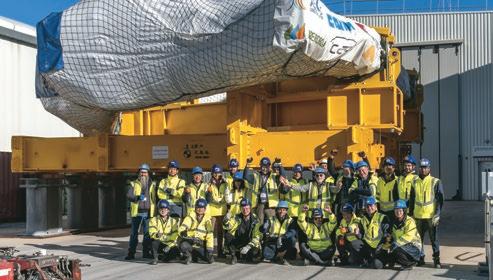
16) (17)
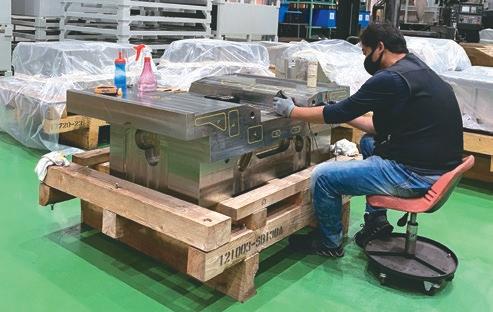
❱ The plasma-facing components of the ITER divertor will face a heat flux of 10-20 MW/m² (or ten times the heat load of a spacecraft re-entering Earth’s atmosphere). The first full-scale test assembly of the divertor outer vertical target manufactured in Japan has been tested at the Divertor Test Facility in Russia where it successfully passed 6,000 test cycles with loads from 5 to 20 MW/m²; a second Japanese prototype will be shipped for testing in 2024. The last potential supplier in Europe for the inner vertical target has also shipped a test assembly to Russia for testing next year.
❱ The United States is supplying the transmission lines that will efficiently transfer power from the gyrotron sources of the electron cyclotron heating system to launchers near the plasma. Prototype transmission line components from two US ITER bidders have been successfully tested under radiofrequency load at a gyrotron test stand at the Swiss Plasma Center, EPFL (photo). (19)
❱ Ranging in length from 30 to 50 metres, magnet feeders carry cryogens, power and instrumentation from the “warm” environment outside the machine in to the “cold” superconducting magnets. China is procuring the system, which includes 100 large in-cryostat feeders, cryostat feedthroughs, and cold terminal boxes as well as many smaller pieces of equipment. At ITER, 62 major feeder segments have been installed in the Tokamak Complex out of 71 delivered.
❱ While a continuous archiving system has been in place to collect and store information since the beginning of the project, the data archiving system now operates in “quasi” real time, collecting and storing data at rates of up to 37 GB per second. Collecting engineering and test data from the commissioning and early operation of plant systems helps in the evaluation of performance in the short term and keeps a record of how the machine was built in the longer term. Reactive power compensation was the first real-time system connected.





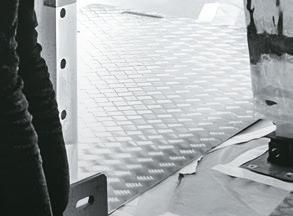

As










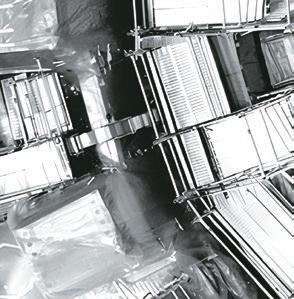
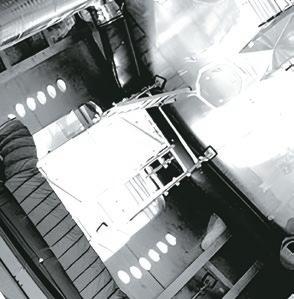

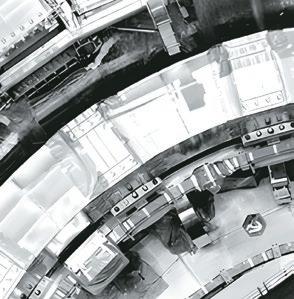


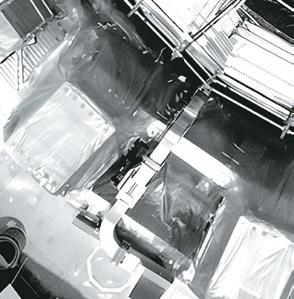

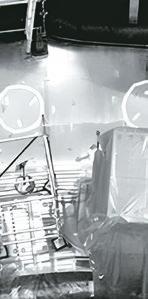

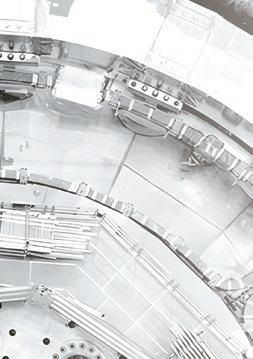







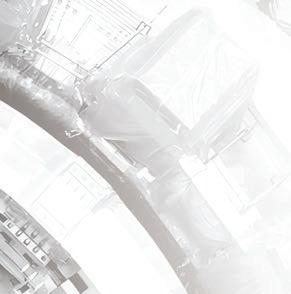




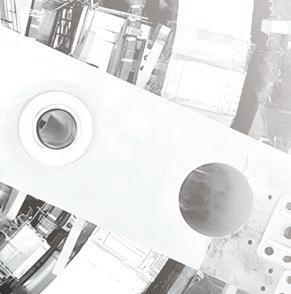








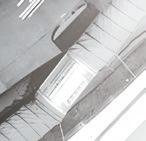



The ITER Research Plan was initially developed during the ITER Design Review in 2007-2008 to outline the steps of the experimental program through high-fusion-gain deuteriumtritium operation. It was further elaborated in the ensuing years to identify the main lines of physics R&D required to support preparation for ITER operation and to incorporate elements of the testing program for tritium breeding technology, then updated again in 2016 to reflect the new schedule. Today, it is necessary to redesign the path to achieving the project’s research goals to adapt to modifications in the project schedule and in the configuration of the ITER device and ancillaries that have been proposed as part of the new Project Baseline that will be reviewed by the ITER Council in 2024.
The new plans are being elaborated to minimize the impact of delays in the project schedule on nuclear operation as well as to provide a more robust path to ITER licensing. In the new approach, scientific exploration is divided into three phases:
❱ Start of Research Operation (SRO): With all in-vessel components installed except the water-cooled blanket first wall, ITER explores high-confinement operation (H-mode) in deuterium-deuterium (DD) plasmas up to 7.5 MA and the full commissioning of superconducting magnet and divertor systems. Plasma control, protection and disruption mitigation systems are commissioned to 15 MA.
❱ Deuterium-Tritium Operation 1 (DT-1): The watercooled blanket first wall and all additional heating systems are installed and the project goals of reproducible Q≥10, with 500 MW fusion power production, for 300-500 s pulses are achieved at limited fluence (~ 1% of final project specification). The first-phase safety demonstration for ITER operation is developed.
❱ Deuterium-Tritium Operation 2 (DT-2): In its final configuration, the ITER machine demonstrates all project goals (Q≥10 for 300-500 seconds; Q=5 for 1000 seconds; Q=5 for 3000 seconds in non-inductive steady-state plasmas) as well as routine operation at high Q and high fluence neutron production. The second-phase safety demonstration can be developed with knowledge acquired during DT-1.
During a review in September, the ITER Council Science and Technology Advisory Committee recommended adopting the proposed outline operational plan as a basis for the further articulation of the Updated Baseline. The ITER Research Plan must now be consolidated around this approach. Experts nominated by the ITER Organization and the Domestic Agencies are holding in-depth discussions to review in detail the operational plan and the compatibility of machine configuration with the objectives of the new scientific blueprint.
The change of first wall armour material from beryllium to tungsten that has been decided as part of the Baseline (see next page) has important consequences for the ITER Research Plan, because a higher tungsten source means higher potential contamination of the plasma core and impact on the fusion power output. With the help of experts in the fusion community through the ITER Tokamak Physics Activity (ITPA) and the ITER Scientist Fellows Network, the main issues with a full tungsten wall are being addressed and some outstanding questions are being investigated through new tokamak experiments at medium-sized research tokamaks in the Members in order to improve predictions for plasma performance at ITER.
Baseline-related changes to structures, systems and components of the ITER machine and plant must also be managed through the technical configuration control process. The Central Integration team has been instrumental in identifying the exact systems configuration needed for the various stages of operation and in organizing the change management procedures that ensure lifecycle configuration management. A reference plan has been developed for the efficient transition to the new techical baseline accommodating both the new Research Plan approach and modifications resulting from the change in first wall material (plasma heating, wall conditioning with boron, and new specifications for the Hot Cell).


The ITER machine was to be equipped with seven electrodes for glow discharge cleaning (GDC) using hydrogen, deuterium or helium plasmas. Boronization requires four more in order to obtain a homogenous boron film on the entire 700 square metre surface of the ITER first wall.
The ITER Organization made the decision in 2023 to modify the armour material planned for the first wall of the ITER blanket, replacing beryllium with tungsten. The rationale for this change is two-fold. First, future fusion devices designed for a burning plasma plan to use tungsten as armour material; in this context, ITER operation with beryllium did not align with the fusion community’s roadmap to fusion energy. Second, specific concerns about beryllium—for example the quantity of dust generated through erosion, the metal’s toxicity and implications for maintenance, and recent modelling that suggests that the strong melting of beryllium during off-normal plasma events at medium plasma currents can lead to premature failure of the first wall panels due to induced electromagnetic forces— justified the consideration of an alternative.
Starting with a tungsten first wall will mean that there is no longer the need to plan for full first wall replacement (as would have been the case for beryllium), resulting in time saved and a significant reduction in radwaste. Other consequences of this modification will require additional planning and preparation by the global ITER team: new first wall panels have to be developed, qualified and procured; significant additional electron cyclotron resonance heating power will be required as part of a modified mix of heating and current drive power; and a new process—boronization—must be implemented in the tokamak (see figure above) to coat the tungsten wall with a thin boron layer in order to improve the capture of oxygen atoms that could increase the contamination of the plasma (beryllium was a natural oxygen “getter”).
These planned changes to components and systems must be designed into the machine and buildings. The ITER Research Plan must also be refined, as described earlier. All of these efforts are underway.
Designing the interface between a fusion plasma and the surrounding solid material environment is arguably one of the greatest technical challenges to the realization of fusion energy. By moving forward with a tungsten first wall, and testing it in reactor-scale conditions with a self-heated plasma, ITER will directly inform DEMO-phase devices.
PRIZE-WINNING STORY OF METALLIC MELTING
Predicting how tungsten melts during an uncontrolled release of plasma energy—such as during fast transient magnetohydrodynamic activity or a plasma disruption—is an important part of developing risk mitigation plans for ITER’s new blanket first wall.
A multiyear effort to advance the framework for melt predictions at reactor scale has given rise to a flexible modelling tool that is being applied successfully to the interpretation of recent melt experiments, and that is used as the main predictive tool for the assessment of gross topological erosion due to transientinduced armour melting on ITER.

The tool was developed by a group of researchers at the Royal Institute of Technology (KTH) in Sweden, led by Prof. Svetlana Ratynskaia. The team began by refining a simulation tool developed at the Karlsruhe Institute of Technology with added
physics and more recent experimental data. The result—a code called MEMOS-U—provided a unified description of metallic plasma-facing-component melting in magnetic confinement devices. (A paper describing this development won the prestigious Nuclear Fusion prize in 2023.) The team has since used the understanding it developed to create a completely new, modern and flexible modelling tool (MEMENTO) that is the key modelling framework for the evaluation of erosion of tungsten components under transients in ITER and reactor-scale devices.

An example of the new MEMENTO melt code applied to the simulation of a dedicated experiment performed at ASDEX Upgrade designed to study the flow of molten tungsten over castellation gaps in plasma-facing components (of which there will be hundreds of thousands in ITER).
S. Ratynskaia et al 2020 Nucl. Fusion 60 104001
INCREASING FUSION PERFORMANCE WITH ENERGETIC-PARTICLE-DRIVEN INSTABILITIES
In the 150-million-degree burning plasma of the ITER Tokamak, a fraction of the particles will be even hotter—with temperatures on the order of 15 billion °C. These energetic particles, born from fusion reactions or the auxiliary heating systems, are essential to maintaining the self-heating of the plasma, key to achieving high performance in future fusion reactors.
However, the presence of energetic particles can drive instabilities in the plasma core, such as the so-called “fishbone” instability that is named for the way it appears on the magnetic measurements (see figure in the next column). If the amplitude of this instability is large enough, it can lead to a redistribution of energetic particles out of the plasma core, deteriorating the plasma’s self-heating process.
Through an international collaboration involving researchers from the ITER Organization, the United States, France and China, scientists have shown for the first time that the amplitude of the fishbone instability can be significantly reduced by the self-generation of strong flows within the plasma. This research was carried out using state-of-the-art plasma simulation software developed at the University of California Irvine, the Princeton Plasma Physics Laboratory and the École Polytechnique in Paris.
The simulations described an experimental plasma discharge from the DIII-D tokamak at General Atomics (San Diego, USA) that was chosen to capture the dynamics of energetic particles in ITER. This experiment featured a sharp increase of plasma performance during the excitation of fishbone instabilities.
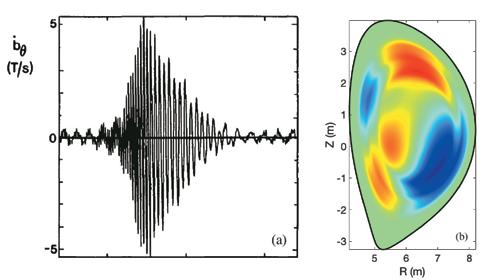
By allowing the fishbone to self-generate plasma flows in the simulations, the plasma software models were able to recover, for the first time, the experimental observations for the fishbone amplitude and the fraction of energetic particles that were redistributed. Moreover, the plasma flows in the simulations were strong enough to suppress the turbulent transport in the plasma core, which accounted for the observed sharp increase of plasma performance in the DIII-D experiment. Similar simulation results were obtained in predictions for the ITER Tokamak.
These results, published in PhysicalReviewLetters, show that instabilities driven by energetic particles can have a positive impact on fusion performance and that they are not always detrimental. It opens the door for the development of high-performance scenarios in ITER that utilize this novel physics of plasma flow generation by fishbone instabilities.
G. Brochard et al 2024 Phys. Rev. Lett. 132 075101

CLASH DETECTION FOR EFFICIENT CONSTRUCTION
Clash detection is used to detect, in advance of construction, when two elements in a design occupy the same physical space. At ITER, clash detection is regularly carried out on the 3D models of all buildings and areas for which system design development is still ongoing in order to consolidate the layout of the systems. Only a clash-free design can actually be constructed on the ITER site. All models covering a given area are opened in the 3D software CATIA and automatic clash detection is launched. The output of this process—a list of all physical clashes between the models—is exported to a clash master file with all relevant information on each clash, including the identifiers of the conflicting elements, the system owner(s), the clash location (room), and the exact xyz coordinates.
Depending on the maturity of the system designs and 3D models, the number of clashes or issues detected can climb into the hundreds or even thousands. The overwhelming majority of the issues will turn out to be irrelevant, caused by maintenance space reservations or small 3D modelling


errors—as for example when a support element is shown slightly “inside” the embedded anchor plate to which it is to be welded.
Filtering out these irrelevant items to efficiently group and categorize the remaining clashes is a challenge. Some can be filtered automatically by applying different categorization rules, but to work effectively these rules require that the 3D models have been prepared rigorously and that, for example, all the tagging and naming of the elements has been done correctly, which is not always the case.
All identified clashes that are not automatically filtered out as irrelevant must be checked manually. Various tools have been developed to assist in this process, but once all obvious grouping and cleaning has been done the remaining clashes must be checked one by one. If the clash is simple and the solution apparent, preliminary corrective actions are assigned to the “clashing” parties and are recorded in the master file. The most demanding clashes, possibly involving several systems, are discussed in the dedicated workshops organized by Design Integration until corrective actions are mutually agreed upon. Clash detection will continue as long as there are system designs in evolution.

A major project has been launched to consolidate the way that the ITER Project manages engineering data. There are currently more than 10 software tools in productive use at the ITER Organization that manage significant quantities of engineering data, but only a small subset has been adopted project-wide. In addition, relevant data is maintained by some teams in Excel spread sheets, making
it challenging for engineers at the ITER Organization and the Domestic Agencies to find correct, applicable, and approved diagrams and other related information. An approach has been chosen to improve the situation drastically in the course of the next three years. Access to relevant engineering data will be provided through a single data management system, capable of properly displaying the state of approval and applicability for each document. Each peripheral software tool will share its engineering data with the main system using the same ordering principle—Product Breakdown Structure (system identifiers) and Geometrical Breakdown Structure (room identifiers). The chosen data management system is the ITER Collaborative Platform (ICP), which already provides the backbone for ITER Document Management (IDM) and is well-known across the project.
By consolidating the management of engineering data across the project and removing “data silos,” the organization expects that workflow efficiency will be facilitated. Reducing the number of software tools in use project wide will also contribute to cost containment.
DESIGNING THE INTERFACE BETWEEN A FUSION PLASMA AND THE SURROUNDING SOLID MATERIAL ENVIRONMENT IS ARGUABLY ONE OF THE GREATEST TECHNICAL CHALLENGES TO THE REALIZATION OF FUSION ENERGY.
BY MOVING FORWARD WITH A TUNGSTEN FIRST WALL, AND TESTING IT IN REACTOR-SCALE CONDITIONS WITH A SELFHEATED PLASMA, ITER WILL DIRECTLY INFORM DEMO-PHASE DEVICES.




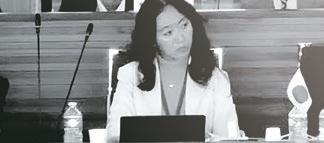

















❱ Members of the European Parliament tour ITER
❱ Yutaka Kamada takes office as Deputy Director-General, Science and Technology
❱ Public Open Doors Day
❱ Delong Luo takes office as Deputy Director-General, Corporate
❱ ITER Robots competition, 12th edition
❱ Minister Keiko Nagaoka (MEXT) from Japan visits
❱ 32nd Meeting of the ITER Council
❱ ITER International School #12 held in Aix-en-Provence, France
❱ Open Doors Day organized for staff
❱ French Minister of Higher Education and Research, Sylvie Retailleau, visits




❱ ITER Director-General meets French President Emmanuel Macron in Marseille
❱ Sergio Orlandi is appointed Head of the ITER Construction Project
❱ Alain Bécoulet is appointed Head of the Science & Integration Department, Chief Scientist
❱ 3rd Safety Day: “A call to action and renewed commitment”
❱ ITER co-hosts the 28th International Conference on Magnet Technology (MT-28)
❱ China’s Minister of Science and Technology Wang Zhigang visits
❱ Launch of a spot award initiative—the ITER Star Awards
❱ Meeting in Paris with the French nuclear safety authority ASN on the new ITER baseline
❱ ITER “Director-General meets Japanese Prime Minister Fumio Kishida in Tokyo
❱ Public Open Doors Day
❱ 33rd Meeting of the ITER Council
❱ Italian Ambassador to France, Emanuela D’Alessandro, visits
❱ ITER is present at the United Nations Climate Change Conference (COP28) in Dubai
❱ Fourth annual ITER Awards
❱ Agreement signed with SWIP (China) for collaboration on the HL-3 tokamak
❱ Record number of visitors to the ITER site in 2023: 25,081
The ITER Organization and the Domestic Agencies continue moving forward expeditiously with the preparation of the updated project baseline proposal for approval by the ITER Council in 2024. Re-baselining has three objectives: optimizing the overall project schedule, minimizing the delay to the start of substantial research operations (full magnet current, deuterium-deuterium plasma, etc.), and lowering licensing and technical risks. Other transformative changes during the year— including a productive dialogue with the nuclear licensing authority in France, the implementation of a construction-focused organizational structure, and project-wide integration efforts—are all part of activities aiming to position the project for success.
ITER PROJECT BASELINE – The ITER Organization and the ITER Domestic Agencies are updating the project’s baseline (scope, schedule, cost and risk) to reflect first-of-a-kind technical issues, accumulated
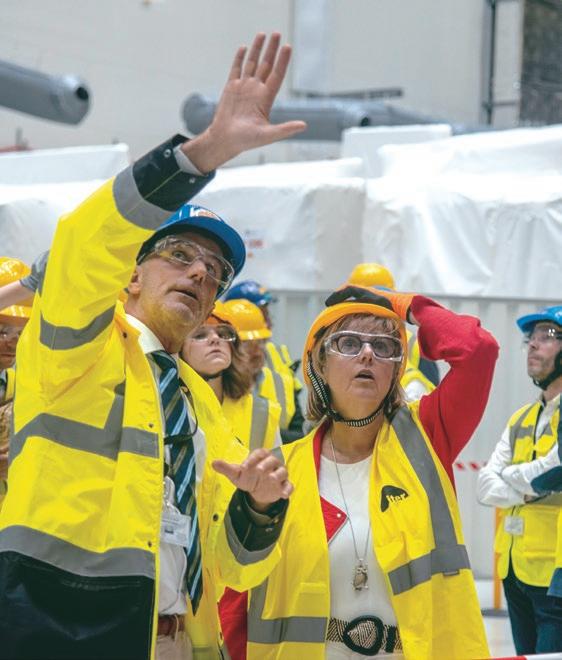
delays in the assembly of the machine (including delays due to the Covid-19 pandemic and technical setbacks), and challenges in the context of the ITER safety demonstration. Baseline 2024, detailing all remaining Construction Phase work, will set forth a reliable pathway to the start of substantial research operations and a corresponding set of milestones. Work is progressing based on the technical configuration and assumptions presented to the ITER Council in November; these include a modification in blanket first-wall armour material (see page 31) and a staged nuclear safety demonstration (next paragraph). The project is also developing the key project management indicators that will be used to monitor work progress in the framework of the new baseline.
REGULATORY ENVIRONMENT – As a Nuclear Operator under French law, the ITER Organization must demonstrate safety with a high degree of conservatism. In the reference scenario for the new baseline the ITER Organization proposes an approach, underpinned by the nuclear safety review and impact analysis carried out by the ITER Organization on the new ITER Research Plan (see page 30), that lowers technical and operational risks through a two-step nuclear safety demonstration and associated licensing roadmap. By beginning research operations with significantly augmented scope, followed by nuclear operation in two phases—a first deuterium-tritium (DT) Q≥10 phase achieved at limited fluence (~1% of the final project specification) and a second DT phase at high fluence neutron production—the project will secure early and better prediction of the deuteriumtritium radiological map and build ITER’s safety demonstration on the basis of findings from experimentation.
The proposed licensing roadmap has received positive feedback from the French nuclear safety authority (Autorité de sûreté nucléaire, ASN), which has stated that it welcomes this period of stepping back, reviewing and resetting, seen as vital for the project. In parallel, the ITER Organization is implementing concrete steps to reinforce nuclear quality culture including among contractors working at the ITER site or in the Domestic Agencies.


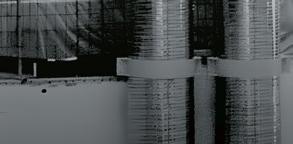


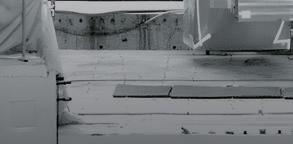





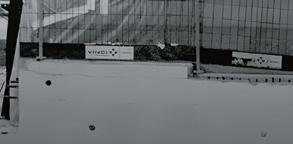

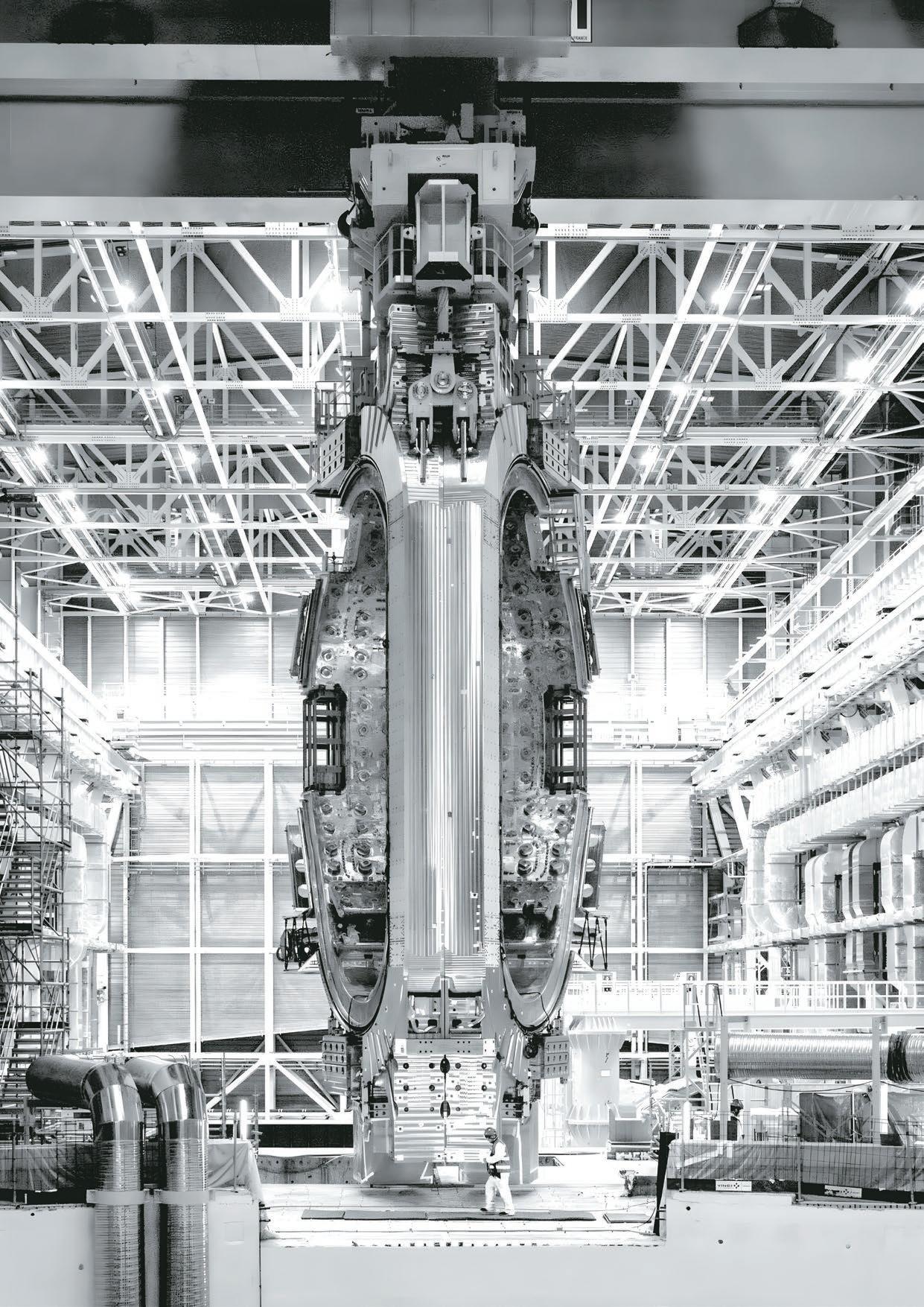
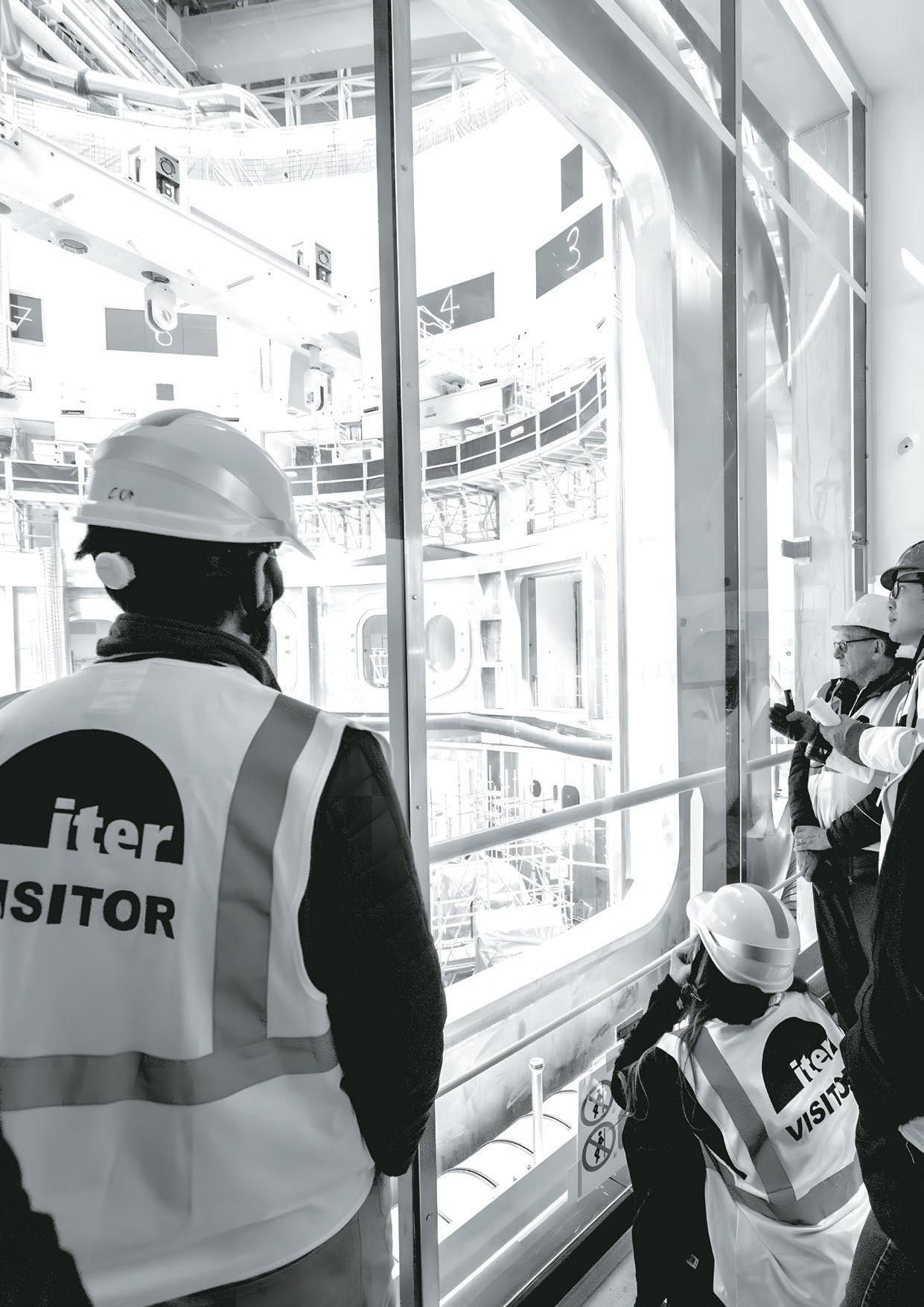
REORGANIZATION – The ITER Organization is moving toward a fully matrixed organizational structure that will be completed with the implementation next year of the Engineering Services Department. One of the objectives of this corporate restructuring is to streamline and improve construction delivery through greater top-down delegation, increased agility, and fewer management layers. Another is to establish clear lines of responsibility and accountability for cost, schedule, performance, and safety. The Construction Project—one of six new departments—has been reorganized into 10 construction programs, each in turn overseeing multiple projects clustered around similar areas of technology. Recruitment for most top-level positions in the new organization has been concluded successfully, with the appointment in 2023 of the Chief Scientist as well as the Head and Deputy Head of the Construction Project.
Targeted actions to more closely integrate the ITER Organization and Domestic Agencies are also in progress. A crucial focus is establishing the procedures, particular to each Member, that would allow systems experts from the Domestic Agencies to be seconded to the ITER site for the duration of the installation and commissioning of their equipment in order to allow continuous responsibility to be maintained from design through integrated commissioning. In addition, the project is examining the possibility of scope transfer from the Domestic Agencies to the ITER Organization for some highly integrated site activities. Information technology teams from the Domestic Agencies are working with the ITER Organization to improve the integration of common collaborative tools, and a first integrated schedule exercise is underway with the European Domestic Agency as part of the 2024 Work Plan. A fundamental shift in the approach to technical data management is also in progress, which aims to improve configuration and access by progressively recentring currently dispersed engineering data around one platform, the existing ITER Collaborative Platform (ICP). Finally, representatives from across the project are collaborating to define new corporate values as part of an effort to nurture a project-wide culture.
PUBLIC/PRIVATE COLLABORATION – Following a request from the ITER Council in November 2023 that the ITER Organization, in collaboration with the Domestic Agencies, engage with private sector fusion initiatives “at a pace that will not compromise its core tasks, and in line with the ITER Agreement,” the ITER Organization is pursuing avenues for collaboration. Optimally, ITER’s years of accumulated knowledge and lessons learned during design, manufacturing, and assembly can be shared in a way that spurs the global fusion innovation program. A first focus is to consolidate this “know-how,” which is detained by a multitude of sources in a broad array of formats. An editorial board, composed of experts with longstanding experience with the ITER Project, has been formed to deliver a single, standalone publication—the ITER Design Handbook—detailing
RE-BASELINING HAS THREE OBJECTIVES: OPTIMIZING THE OVERALL PROJECT SCHEDULE, MINIMIZING THE DELAY TO THE START OF SUBSTANTIAL RESEARCH OPERATIONS..., AND LOWERING LICENSING AND TECHNICAL RISKS.
for posterity the design methodologies and principles, the underlying technical design basis for ITER and its evolution from the years of conception to the start of construction, as well as the technical, scientific, and regulatory rationale behind major decisions. The goal is full transparency, so that the Design Handbook can serve as a valuable tool for all ITER stakeholders, a useful reference across the private sector, and a global educational resource for researchers, students and trainees. In addition, the ITER Organization is planning a major public/ private fusion workshop on site in 2024. The outcomes of this workshop will help to establish priorities and formulate plans for how ITER will engage with private sector fusion companies going forward.
STAFFING – The drive to increase the recruitment of staff from under-represented Members and to create a more equitable and inclusive workplace for under-represented groups is beginning to demonstrate results, with the latest recruitments trending in a positive direction. A working group on diversity, equity and inclusion (DEI) formed with the Domestic Agencies and a Management Advisory Committee DEI Subgroup representing the ITER Members plan to work in concert with the ITER Human Resources Division to promote policies that further facilitate the hiring of qualified and diverse individuals. Another topic of major focus at the ITER Organization—staff wellbeing— was the subject of two staff surveys in 2023, including one on psychosocial risks. As part of risk prevention, and in addition to training for managers, in-person psychological support services are now available on the ITER site. In 2023, the number of directly employed staff increased by 3% to 1,102 people. Contributions to the project were also made by 13 experts, 2 visiting researchers, 134 interns, 204 ITER Project Associates, and 18 post-doctorates.
INTERNATIONAL COOPERATION – The ITER Organization maintains cooperation agreements with the laboratories and educational establishments of the ITER Members as well as with international organizations (see full list on page 56). It also has technical cooperation agreements with non-Member states.











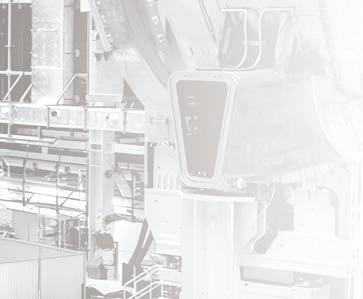











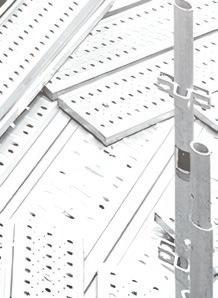









(1) Includes 5 Monaco Postdoctoral Fellows and staff funded for work on the Tokamak Cooling Water System (TCWS, 29), the Vacuum Auxiliary System, (VAS, 3) and the Safety Control System for Nuclear (SCS-N, 1) (2) Includes 7 Monaco Postdoctoral Fellows and staff funded for work on the TCWS (27), VAS (2) and SCS-N (2) (3) Includes 5 Monaco Postdoctoral Fellows and staff funded for work on the TCWS (25), VAS (2) and SCS-N (2) (4) Includes 9 Postdoctoral Fellows (6 Monaco and 3 KO-DA) and staff funded for work on the
(19),
(2) and SCS-N (2), (5) Includes 18 Postdoctoral Fellows (4 Monaco, 6 KO-DA, 8 ITER Organization) and staff funded for work on the TCWS (15), VAS (2) and SCS-N (1), *“Other” refers to staff members from Switzerland, Ukraine and, as from 2023, the United Kingdom.






The Construction Project (CP) categories EDD (Engineering Design Department), MCD (Machine Construction Department), and PLD (Plant Construction Department) represent a transition between the 2022 and 2023 charts. For the full names of all units, see the Organization Chart on page 58.
CONTRIBUTIONS RECEIVED FROM MEMBERS IN CASH Amounts in
CUMULATIVE IN-KIND CONTRIBUTIONS BY MEMBERS
Amounts in ITER Unit of Account (IUA)





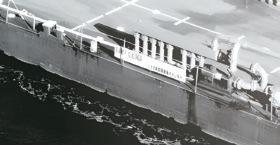














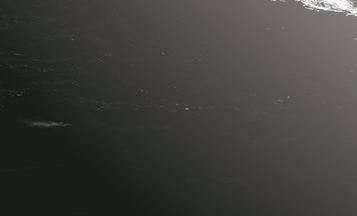
R&D, MANUFACTURING MILESTONES
MAJOR CONTRACTS
ITER ORGANIZATION – DOMESTIC AGENCY MILESTONES

COMPLETED PACKAGE

The figures on the following pages are adjusted annually for changes in credit value due to Procurement Arrangement Refinements (PAR) and Additional Direct Investment (ADI) related to Project Change Requests. Please note that the 2023 figures supersede all previously published figures.




Packages allocated to the ITER Organization (some cryogenics, heating, tooling, tritium plant, and diagnostics) are not represented in these pages.

www.iterchina.cn
PROCUREMENT ARRANGEMENTS
Fourteen PAs signed since 2007 representing: 100% in number and 100% of the total value of CN-DA in-kind contributions.
Over 93 design or fabrication contracts related to ITER procurement have been signed with laboratories and industry.
Chinese procurement highlights in 2023
MAGNET SYSTEMS
of ITER system procured by China
Credit released out of allocation
Completion of all magnet support component deliveries this year FEEDERS
14 feeder segments and 2 units of on-site auxiliary materials delivered in 2023
81% of feeder components have been manufactured
All bottom correction coils (BCC) and top correction coils (TCC) delivered
First side correction coil (SCC1) ready for cold test CORRECTION COIL AND FEEDER CONDUCTORS
All correction coil and feeder conductors delivered POWER SYSTEMS
All components of PPEN
convertors have been installed; commissioning phase beginning
Low voltage commissioning test passed; ready for high voltage commissioning BLANKET
FIRST WALL
Enhanced heat flux full-scale prototype with beryllium: fabrication completed, testing report approved BLANKET SHIELD BLOCK
55% of blanket shield block fabrication completed FUEL CYCLE
INJECTION SYSTEM
Gas valve box (GVB) manufacturing contract awarded GLOW DISCHARGE CLEANING
DIAGNOSTICS
DIAGNOSTICS
First batch of boron carbide (B4C) shielding material for port plug #12 manufactured MRR held for supporting flange of radial x-ray camera
Long-pulse and high-heat-flux tests passed for divertor Langmuir probe

www.iter-india.org
PROCUREMENT ARRANGEMENTS
Fourteen PAs signed since 2007 representing: 100% in number and 100% of the total value of IN-DA in-kind contributions.
50 design or fabrication contracts related to ITER procurement have been signed with industry and R&D organizations.
Indian procurement highlights in 2023
CRYOSTAT
CRYOSTAT
I&C cubicles delivered to IO; 90% of manufacturing completed on 6 torus cryopump housing units
CRYOGENIC SYSTEMS
Lower pipe chase cryolines completed
% of ITER system procured by India
All cryoline and warmline deliveries completed; mechanical installation and acceptance testing ~75% completed CRYODISTRIBUTION
Delivery of three auxiliary cold boxes (ACBs) to IO (IC milestone) FDR of thermal shield cold valve box (TCVB) internal piping completed; MRR of TCVB vacuum shell and TCVB cryo-valves completed
HEATING & CURRENT DRIVE SYSTEMS
Manufacturing of 200kW, 1MHz solid-state RF generator ongoing
Design modification completed for electrostatic residual ion dump
Beam line components (neutralizer, residual ion dump) ready for shipment to Indian Test Facility
% Credit released out of allocation
Beam source: 85% manufactured; accelerator assembly initiated. Improvements proposed by IO based on lessons learned from SPIDER are under study and implementation
Contract awarded for DNB vessel; contract awarded for HNB-3 (heating neutral beam) vessel under IO Task Agreement, MRR in preparation
Final design of DNB drift duct completed
NBTF COMPONENTS (BEAM DUMP & 100 KV POWER SUPPLY) 3.4%
All NBTF components completed
Support provided for SPIDER activities
ION CYCLOTRON RADIO FREQUENCY (RF) POWER SOURCES
Technical documentation prepared to initiate tender for high-power amplifier and other in-house-developed components
Full-power test of in-house-developed 10KW solid-state power amplifiers in progress at ITER India laboratory
Mechanical acceptance testing completed for 3MW in-house-developed MMTL system (Mis-Match Transmission Line) at ITER India laboratory
Acceptance testing of I&C cubicles for slow controller and servomotor controller completed at ITER India laboratory
CE (Conformité Europénne) certification test for signal conditioning module of local control unit completed ION CYCLOTRON RF POWER SUPPLY
High-voltage power supply operated in integrated mode with ion cyclotron RF sources at ITER India laboratory
ELECTRON CYCLOTRON HIGH VOLTAGE POWER SUPPLY
Main high-voltage power supply utilized at ITER India Gyrotron Test Facility (IIGTF) for integrated operation of gyrotron FDR held for electron cyclotron high voltage power supply
ELECTRON CYCLOTRON RF GYROTRON POWER SOURCES
(2 GYROTRONS OUT OF 24)
Detailed assessment of gyrotron operational data (170GHz, 1MW Test Gyrotron System) at IIGTF completed Gyrotron operated at low power to gain operational expertise
Design activities for FDR ongoing
COOLING WATER SYSTEMS
Supplier shortlisted for fabrication of safety valves
VACUUM VESSEL
(IWS) BLOCK ASSEMBLIES
PA deliverables shipped and accepted by IO
DIAGNOSTICS DIAGNOSTICS
X-ray crystal spectroscopy (XRCS)/Survey: PDR of survey spectrometer completed; survey sight tube manufacturing and FAT completed for delivery to port integrator RF-DA XRCS/Edge: hybrid pixel photon counting detector successfully tested at ITER India; experiments to support prototype activities ongoing
Electron cyclotron emission (ECE): PDR of ex-vessel transmission lines and receivers successfully completed; prototype hot source received in ITER India Diagnostic Lab after successful FAT CXRS pedestal: termination fibre bundle assembly manufactured and tested for transmission performance; specifications finalized for spectrometer and detector Upper port #09: design development to customize in-port diagnostic systems ongoing
www.fusion.qst.go.jp/ITER/english/iter.html
PROCUREMENT ARRANGEMENTS
Fifteen PAs signed since 2007 representing: 83% in number and 98% of the total value of JA-DA in-kind contributions.
More than 800 design or fabrication contracts related to ITER procurement have been signed with industry since 2007.
Japanese procurement highlights in 2023
MAGNET SYSTEMS
All conductor unit lengths delivered
of ITER system procured by Japan
OUT OF 19)
Last three toroidal field coils delivered to IO in 2023; full delivery scope completed TOROIDAL FIELD MAGNET STRUCTURES
All magnet structures delivered
All conductor unit lengths delivered
HEATING & CURRENT DRIVE SYSTEMS
Procurement of high voltage bushing completed
FAT completed for gyrotron #8; gyrotron #7 FAT pending
Gyrotrons #5 and #6 delivered to IO with superconducting magnet #7 and matching optical units #5 and #6
EQUATORIAL LAUNCHER
Final design and analysis is progressing for FDR
Remote Handling
REMOTE HANDLING SYSTEM
Final design continuing
Prototype test design verification started
Divertor
Manufacturing of outer target prototypes almost completed
Commissioning of Hot Helium Leak Test Facility completed
Series manufacturing: first six outer targets ongoing
Tritium Plant
DETRITIATION
JA-DA/IO procurement activities proceeding
Diagnostics
Microfission chamber: final design underway for feedthrough and connector/ex-vessel components and detectors
Edge Thomson scattering: resolving FDR chits for beam dump; final design of other components underway
Poloidal polarimeter: retroreflector in manufacturing; resolving FDR chits for equatorial port #10; final design underway for other components
Infrared thermography: final design underway
Divertor impurity monitor: resolving PDR chits for upper port #1 and equatorial port #1 components, preliminary design underway for lower port #2 components
Lower port #2 integration: final design underway for in-vessel components, preliminary design underway for ex-vessel components
Credit released out of allocation

https://www.iterkorea.org
PROCUREMENT ARRANGEMENTS
Eight PAs signed since 2007 representing: 89% in number and 95.4% of the total value of KO-DA in-kind contributions.
Over 300 design or fabrication contracts related to ITER procurement have been signed with universities, laboratories and industry since 2007.
Korean procurement highlights in 2023
VACUUM VESSEL
MAIN VESSEL (4 OF 9 SECTORS)
Procurement Arrangement scope completed (S#6 and S#7 delivered)
Responsible for another 2 sectors (S#8 and S#1) under direct IO contract (Delegation Agreement)
Activities progressing on last sector (#1) under IO contract (99.2% completed)
EQUATORIAL PORTS AND LOWER PORTS
Lower port extensions (#10, #12 and #16) delivered to IO
Manufacturing of all vacuum vessel gravity supports (total 9 sets) completed; 8 sets delivered to IO
Activities progressing on remaining ports, gravity support, superbolts and inserts
Raw materials fabrication; 180 blocks completed
Series production underway; 100 of 220 blocks completed
SYSTEMS
Toroidal field coil AC/DC converters and transformers finalized, shipped to IO
Installation activities progressing
All conductor unit lengths delivered
THERMAL SHIELD
VACUUM VESSEL THERMAL SHIELD AND CRYOSTAT THERMAL SHIELD
All of the main components of the thermal shields delivered
ASSEMBLY TOOLING MACHINE ASSEMBLY TOOLING
All machine assembly tools delivered TRITIUM PLANT
STORAGE & DELIVERY
Revision of storage and delivery system (SDS) preliminary design underway
Task Agreement signed on 5x-bed manufacturability and SDS preliminary design document review
DIAGNOSTICS
DIAGNOSTICS
of ITER system procured by Korea
Credit released out of allocation
Final design approved for vacuum ultra violet (VUV) core survey and EG VUV spectrometer components in equatorial port #11
Final design in progress for neutron activation system and upper port #18 systems and integration engineering

www.iterrf.ru
PROCUREMENT ARRANGEMENTS
Twelve PAs signed since 2007 representing:
100% in number and 100% of the total value of RF-DA in-kind contributions.
800 design or fabrication contracts related to ITER procurement have been signed with industry since 2007.
Russian procurement highlights in 2023
POWER SYSTEMS
SWITCHING NETWORK, FAST DISCHARGE UNITS, DC
Sets of busbar elements fabricated, tested, and shipped to IO for mounting in Tokamak Building
Switching devices for switching network and fast discharge unit kits fabricated and tested
FDR-3.0 passed for toroidal field coil switching devices
MAGNET SYSTEMS
All conductor unit lengths delivered
All conductor unit lengths delivered POLOIDAL FIELD MAGNET NO.1
PF1 magnet delivered to ITER construction site in February
MRR for rough machining, hot isostatic pressing approved by IO
MRR for electrical strap approved by IO
Final acceptance at IO site of all electrical strap pedestals including spares
A number of plasma-facing elements (lids and casings) manufactured PLASMA-FACING COMPONENT TESTS
Series of high-heat flux tests performed on elements of JA-DA outer vertical target full-scale prototype
% of ITER system procured by Russia
% Credit released out of allocation
IO-Bureau Veritas contract signed for inspection of PPTF pressure equipment
Diagnostics DIAGNOSTICS
Vertical neutron camera: First batch of 20 diamond sensors manufactured and delivered; agreement between RF-DA and IO signed
Neutral Particle Analyzers: Application developed for transmitting data packets to a high-performance real-time software-defined network (SDN)
Thomson scattering: laser radiation trap structure corrected on cassette #21; collection/input system optical component placement finalized; supporting structures for lower port #08 optical components developed in 3D
Divertor neutron flux monitor: forgings of 316 L(N)-IG steel delivered to manufacturer
Integration engineering progressing for equatorial port #11 and upper port #07
Upper ports #02 and #08: FDR-1 document preparation completed
HEATING & CURRENT DRIVE SYSTEMS
ELECTRON CYCLOTRON RADIO FREQUENCY POWER SOURCES
(8 GYROTRONS OUT OF 24)
FAT passed for gyrotron set #7
Gyrotron set #8 fabricated and prepared for testing

www.usiter.org
PROCUREMENT ARRANGEMENTS
Seventeen PAs signed since 2007 representing:
100% in number and 100% of the total value of US-DA in-kind contributions.
The US has awarded more than 600 design or fabrication contracts to US industry, universities, and national laboratories in 46 states plus the District of Columbia since 2007.
US procurement highlights in 2023
COOLING WATER SYSTEM
Two arrangements in progress with contracts placed and fabrication underway
MAGNET SYSTEMS
CENTRAL SOLENOID (CS) MODULES, STRUCTURE AND ASSEMBLY TOOLING
CS modules 4 and 5 delivered to IO
CS modules 1 and 2 stacked for assembly
Lower support components: fabrication and delivery continues
CS assembly support workshop held
TOROIDAL FIELD CONDUCTOR
All conductor unit lengths delivered
DIAGNOSTICS
Low field-side reflectometer in-vessel preparation for manufacturing in progress
Design continues for 6 other instruments and 4 integrated ports
HEATING & CURRENT DRIVE SYSTEMS
ION CYCLOTRON TRANSMISSION LINES
Preparation for waveguide manufacturing underway
Cryoguard vacuum system pump fabrication underway
PDR of instrumentation and controls for non-active room components complete
PDR for utilities and water distribution complete
FDR for service vacuum system client connections materials complete
First article and pump fabrication underway
Oak Ridge National Laboratory (ORNL) test stand informing injector design options
DISRUPTION MITIGATION SYSTEM UP TO A CAPPED VALUE
ORNL test stand and experimental database informing design options
TRITIUM PLANT
TOKAMAK EXHAUST PROCESSING SYSTEM
Prototype fabrication underway
Final design in progress
POWER SYSTEMS
All components delivered

https://fusionforenergy.europa.eu/
PROCUREMENT ARRANGEMENTS
41 PAs signed since 2007 representing: 85% in number and 96.6% of the total value of EU in-kind contributions.
The EU has awarded 725 design or fabrication contracts related to ITER procurement to universities, laboratories and industry since 2007.
EU procurement highlights in 2023 BUILDINGS
TOKAMAK PIT EXCAVATION AND GROUND SUPPORT STRUCTURE, ANTI-SEISMIC BEARINGS (2 PAS)
Excavation and ground support completed; Anti-seismic bearings completed ITER HEADQUARTERS
Headquarters building completed POLOIDAL FIELD (PF) COILS WINDING FACILITY
PF Winding Facility completed
Cryobridge ready for equipment (IC milestone); early access granted to busbar bridges
Tokamak Complex: full scope of civil works completed; Tokamak Building: nuclear doors completed
Radiofrequency Building: Ready for Equipment conditions met allowing installation by IO
Contracts signed for Tokamak Complex Building Services (TB21) and Lot A Finishing Works (TB22)
MAGNET SYSTEMS
All conductor unit lengths completed
Last two toroidal field coils delivered to IO; high voltage wire repair underway for last coil
All pre-compression rings completed
PF4 completed and delivered; PF3 final assembly before cold test completed HEATING & CURRENT DRIVE SYSTEMS
% of ITER system procured by the EU
Factory testing starting for acceleration grid power supplies; factory testing completed for grid power supplies
Manufacturing activities starting for high-voltage deck and bushing assembly
NB TEST FACILITY (NBTF) COMPONENTS
Residual ion dump, neutralizer and calorimeter in manufacturing; preparations underway for assembly
MITICA beam source: manufacturing and component testing ongoing
NB ASSEMBLY AND TESTING
Preparing for first specific contact for heating neutral beam assembly tooling
NB SOURCE AND HIGH VOLTAGE BUSHING
Pre-procurement activities ongoing
NB BEAMLINE COMPONENTS
Pre-procurement activities ongoing
NB CONFINEMENT
First specific contract signed with industry for the procurement of heating neutral beam vessels
Agreement signed for neutral beam confinement (stage 2, drift duct)
NB MAGNETIC SHIELDING
Preparing for NB Magnetic Shielding PA (NB passive magnetic shielding + active compensation and corrective coils) ELECTRON CYCLOTRON HIGH VOLTAGE POWER SUPPLY
All units delivered to IO; installation of four out of eight units ongoing ELECTRON CYCLOTRON UPPER LAUNCHERS AND EX-VESSEL WAVEGUIDES
Contract signed between technical integrator and RF-DA subcontractor for engineering phase
Design activities progressing towards FDR ELECTRON CYCLOTRON RADIO FREQUENCY POWER SOURCES (6 GYROTRONS OUT OF 24)
First specific contract signed with industry for the procurement of 6 gyrotrons
VACUUM VESSEL
MAIN VESSEL (5 OF 9 SECTORS)
Sector #5: FAT started; pressure test completed
Sector #4: Outer shell welding ongoing
Sector #9: D-shape completed; start of inner shell welding
Sectors #2 and #3: Segment outer shells completed; final machining ongoing
DIVERTOR
Progress in detailed engineering and qualification for series production (first contract) CASSETTE BODY
Series fabrication in progress at both contractors
Transition pieces delivered, contract completed; MRR for pins, sleeves and links contract
DIVERTOR RAIL
BLANKET
BLANKET FIRST WALL
Production lines completed for panel series manufacturing (both contractors); MRR for series production achieved by first contractor BLANKET COOLING MANIFOLDS
Multi-framework contract for series production signed
Task orders launched for manufacturing of full-scale prototypes and for procurement of material
REMOTE HANDLING
IN-VESSEL DIVERTOR REMOTE HANDLING SYSTEM
Significant progress in the final design and supporting R&D of cassette toroidal (CTM) and cassette multifunction movers (CMM)
Preparing to tender the design and manufacture of simplified CTM and CMM for first assembly CASK AND PLUG REMOTE HANDLING SYSTEM
Final design of first assembly casks (equatorial and upper port) completed; manufacturing task order signed EX-VESSEL NEUTRAL BEAM REMOTE HANDLING SYSTEM
Neutral beam crane final design contract awarded
Significant progress in the design of other subsystems needed for first assembly IN-VESSEL VIEWING SYSTEM (IVVS)
Final design advancing, supported by prototyping and testing in the lab with significant test results
POWER SYSTEMS
STEADY STATE ELECTRICAL NETWORK (SSEN) AND PULSED POWER ELECTRICAL NETWORK (PPEN):
AND PPEN INSTALLATION AND COMMISSIONING
PPEN in Area 35 400kV/66kV taken over by IO
FUEL CYCLE
FRONT END CRYO-DISTRIBUTION: WARM REGENERATION LINES
Warm generation line package completed
FRONT END CRYO-DISTRIBUTION:
8 cold valve boxes and associated cryolines delivered CRYOPUMPS, TORUS (6) AND CRYOSTAT (2)
First cryopump tested (cold test, pressure test, leak test) CRYOPUMPS, NEUTRAL BEAM
MITICA cryopump delivered LEAK DETECTION
Critical components qualified for seismic and magnetic field
TRITIUM PLANT
WATER DETRITIATION SYSTEM:
WATER HOLDING TANKS AND EMERGENCY TANKS
Water holding tanks and emergency tanks completed
WATER DETRITIATION SYSTEM: TANKS, MAIN SYSTEM, AND WATER DETRITIATION
HYDROGEN ISOTOPE SEPARATION SYSTEM
Prototype fabrication launched
CRYOPLANT
CRYOPLANT: LN2 PLANT AND AUXILIARY SYSTEMS
DIAGNOSTICS
DIAGNOSTICS
Divertor tangential (magnetics sensor) coils and associated mechanical platforms: completion of planned deliveries
Magnetics diagnostic electronics and software: completion of planned deliveries
Bolometer cable installation templates; MRR closed, manufacturing underway
Radial neutron camera: FDR closed for in-vessel components
Core charge exchange recombination spectrometry: PDR closed for in-vessel components
Equatorial visible/IR wide angle viewing system (WAVS): FDRs held for diagnostic pressure gauges, I&C systems, and ex-vessel sub-systems in equatorial port plug #12
Major contracts signed for core plasma Thomson scattering (final design) and for WAVS in equatorial ports #03, #09 and #17 (preliminary and final design)
RADIOACTIVE MATERIALS

The following entities have signed Cooperation Agreements with the ITER Organization. (The list excludes agreements signed as part of the ITER Project Associates, Scientist Fellows, and ITER Operation Network programs.)
International Atomic Energy Agency (IAEA)
AUSTRIA Euratom
BELGIUM
International Energy Agency (multiparties led by the IEA) FRANCE CERN (European Organization for Nuclear Research)
SWITZERLAND
International Union of Pure and Applied Physics (IUPAP) SWITZERLAND
Belgian Nuclear Research Centre (SCK-CEN)
BELGIUM Laboratory for Plasma Physics, Ecole Royale Militaire/Koninklijke Militaire School (LPP-ERM/KMS)
BELGIUM Institute of Plasma Physics Chinese Academy of Sciences (ASIPP)
CHINA Southwestern Institute of Physics (SWIP)
CHINA State Nuclear Power Engineering Company (SNPEC)
CHINA Institute of Plasma Physics of the Czech Academy of Sciences (IPP-Prague)
CZECH REPUBLIC VTT Technical Research Centre FINLAND Centre National de la Recherche Scientifique (CNRS) FRANCE Commissariat à l’Energie Atomique et aux Energies Alternatives (CEA) FRANCE Forschungszentrum Jülich Gmbh
GERMANY Institut für Technische Optik (ITO) GERMANY
Max-Planck-Institut für Plasmaphysik (IPP)
GERMANY Centre for Energy Research Eötvös Loránd Research Network (EK-CER)
HUNGARY Istituto Nazionale Fisica Nucleare (INFN)
National Institute for Fusion Science (NIFS)
National Institutes for Quantum Science and Technology (QST)
Korea Institute of Fusion Energy (KFE)
Dutch Institute for Fundamental Energy Research (DIFFER)
ITALY
JAPAN
JAPAN
KOREA
NETHERLANDS
Institute of Nuclear Physics, Polish Academy of Sciences (IFJ Pan) POLAND
Institute of Plasma Physics and Laser Microfusion POLAND
Poznan Supercomputing and Networking Center (PSNC) POLAND
Instituto Superior Técnico (IST)
Ioffe Institute
Moscow Engineering Physics Institute (MEPHi)
Barcelona Supercomputing Center
Catalonia Institute for Energy Research
Centro de Investigaciones Energéticas Medioambientales y Tecnológicas (CIEMAT)
PORTUGAL
RUSSIAN FEDERATION
RUSSIAN FEDERATION
SPAIN
SPAIN
SPAIN
Princeton Plasma Physics Laboratory UNITED STATES OF AMERICA
Ghent University
Katholieke Universiteit Leuven (KU Leuven)
BELGIUM
BELGIUM
Dalian University of Technology (DLUT) CHINA
Donghua University CHINA
Huazhong University of Science and Technology (HUST) China CHINA
Shanghai Jiao Tong University (SJTU) CHINA
Shenzhen University
Tsinghua University
University of Beihang (BUAA)
University of Science and Technology of China (USTC)
CHINA
CHINA
CHINA
CHINA
University of South China CHINA
Research and Innovation Centre for Electrical Engineering (RICE) of the University of West Bohemia CZECH REPUBLIC
Aalto University FINLAND
Åland University of Applied Sciences FINLAND
University of Helsinki FINLAND
Université Aix-Marseille FRANCE
Université Sorbonne Paris Nord FRANCE
University of Thessaly GREECE
Dublin City University (DCU) IRELAND
Istituto per la Scienza e Tecnologia dei Plasmi (ISTP) ITALY
Politecnico di Milano
Politecnico di Torino
Università degli studi di Brescia
Università degli studi di Palermo
University of Bologna - Department of Electronic and Information Engineering (DEI) ITALY
University of Genoa - Department of Electrical, Electronic, Telecommunications Engineering and Naval Architecture (DITEN) ITALY
University of Milano – Bicocca ITALY
University of Padua ITALY
University of Pisa ITALY
University of Rome Tor Vergata (URTV ITALY
Keio University JAPAN
Kyoto University JAPAN
Kyushu University, Research Institute for Applied Mechanics (RIAM) JAPAN
Korean Advanced Institute of Science and Technology (KAIST) KOREA
Pohang University of Science and Technology (POSTECH) KOREA
Seoul National University - Nuclear Research Institute for Future Technology and Policy (NIFTEP) KOREA University of Ulsan (UNIST) KOREA
Eindhoven University of Technology NETHERLANDS
National Research TOMSK Polytechnic University (TPU) RUSSIAN FEDERATION
St. Petersburg Polytechnic University (SPbPU) RUSSIAN FEDERATION
University of Peter the Great St. Petersburg Polytechnic RUSSIAN FEDERATION University of Ljubljana SLOVENIA
Fundación de Investigación de la Universidad de Sevilla SPAIN
Universidad Carlos III de Madrid Spain SPAIN
Universidad de Sevilla Spain SPAIN
Universidad Politécnica de Madrid Spain SPAIN
Universitat Politècnica de Catalunya (UPC) SPAIN
University of Chalmers SWEDEN
Uppsala University SWEDEN
Lehigh University
University of California, Irvine (UCI)
University of Wisconsin-Madison
William & Mary
UNITED STATES OF AMERICA
UNITED STATES OF AMERICA
UNITED STATES OF AMERICA
UNITED STATES OF AMERICA
Ecole Nationale Supérieure d’électrotechnique, d’électronique, d’informatique, d’hydraulique et des Télécommunications, Toulouse INP/ENSEEIHT “N7” FRANCE Royal Institute of Technology (KTH) SWEDEN
OTHERS
Lioning Ronxin Xingye Power Technology Co. Ltd CHINA Broader Approach Activities [EU/Fusion for Energy + JA/QST] EUROPE/JAPAN Électricité de France FRANCE
Renaissance Fusion SAS FRANCE
Tunnel Euralpin Lyon Turin FRANCE EUROfusion Consortium GERMANY Google Ireland Ltd IRELAND
Consorzio RFX ITALY
DTT S.C.ar.l. ITALY
Italian National Agency for new Technologies, Energy and Sustainable Economic Development (ENEA) ITALY
National Research Council ITALY
Nippon Telegraph and Telephone (NTT) JAPAN Consortium constituted by TNO, DIFFER, Active Space and Chromodynamics NETHERLANDS Rosatom Western Europe SARL RUSSIAN FEDERATION
Russian Federation Domestic Agency (RF-DA) RUSSIAN FEDERATION
General Atomics
Microsoft Corporation
NVIDIA Corporation
United States Department of Energy
UT-BATTELLE
UNITED STATES OF AMERICA
UNITED STATES OF AMERICA
UNITED STATES OF AMERICA
UNITED STATES OF AMERICA
UNITED STATES OF AMERICA

INTERNAL AUDIT SERVICE
ADMINISTRATION DEPARTMENT
LEGAL AFFAIRS
FINANCE & PROJECT CONTROL
> ACCOUNTING, TREASURY & SYSTEMS
> BUILDING & CONSTRUCTION
PROJECT CONTROL
> BUDGET MANAGEMENT
> ENGINEERING & COMMISSIONING
PROJECT CONTROL
> FINANCIAL CONTROL
PROCUREMENT
> CONSTRUCTION, ASSEMBLY & LOGISTICS
> ENGINEERING, SCIENCE, OPERATION & CORPORATE
HUMAN RESOURCES
> TALENT MANAGEMENT
> HUMAN RESOURCES SERVICES


DESIGN OFFICE
> CAD INFRASTRUCTURE
> CAD ACTIVITIES
ITER CONSTRUCTION PROJECT
CONSTRUCTION PROJECT OFFICE
TOKAMAK PROGRAM
> VACUUM VESSEL DELIVERY, REPAIR & WELDING PROJECT
> MAGNET DELIVERY & COMMISSIONING PROJECT
> VACUUM VESSEL THERMAL SHIELD & CRYOSTAT PROJECT
CONTROLS & INTEGRATED COMMISSIONING PROGRAM
> DATA CONNECTIVITY & SOFTWARE PROJECT
> FACILITY CONTROL SYSTEM PROJECT
> CENTRAL CONTROL INTEGRATION PROJECT
> INTEGRATED COMMISSIONING PROJECT
BUILDINGS & SITE MANAGEMENT
PROGRAM
> BUILDING SERVICE DELIVERY PROJECT
> BUILDING WORKS DELIVERY PROJECT
> CIVIL ENGINEERING AND INTERFACE
PROJECT
> BUILDING AND FACILITIES OPERATION
PROJECT
> CONSTRUCTION SITE MANAGEMENT PROJECT
DIRECTOR-GENERAL
PIETRO BARABASCHI
DEPUTY DIRECTOR-GENERAL CORPORATE
DEPUTY DIRECTOR-GENERAL
SCIENCE & TECHNOLOGY
YUTAKA KAMADA



SCIENCE & INTEGRATION DEPARTMENT
SCIENCE
> EXPERIMENTS & PLASMA OPERATION
> PLASMA MODELLING & ANALYSIS
CENTRAL INTEGRATION
> SYSTEM INTEGRATION
> DATA MANAGEMENT
> IT APPLICATIONS & DEVELOPMENT
> IT SYSTEM & OPERATION
> CONFIGURATION MANAGEMENT
> DESIGN INTEGRATION
> INTEGRATED ENGINEERING ANALYSIS


OFFICE OF THE DIRECTOR-GENERAL COMMUNICATION
ITER COUNCIL
SECRETARIAT


SAFETY AND QUALITY DEPARTMENT
NUCLEAR SAFETY
QUALITY MANAGEMENT
SECURITY AND SAFETY


DIAGNOSTICS PROGRAM
> IN-VESSEL DIAGNOSTICS PROJECT
> EX-VESSEL DIAGNOSTICS PROJECT
> DIAGNOSTIC ENGINEERING PROJECT
NUCLEAR TECHNOLOGY PROGRAM
> BLANKET PROJECT
> DIVERTOR PROJECT
> TRITIUM BREEDING BLANKETS PROJECT
> HOT CELL & RADWASTE PROJECT
> REMOTE HANDLING PROJECT
PLANT INSTALLATION PROGRAM
> MECHANICAL INSTALLATION PROJECT
> ELECTRICAL SYSTEMS INSTALLATION PROJECT
> AUXILIARY SYSTEMS PROJECT
> IN-FIELD ENGINEERING PROJECT
> PLANT INSTALLATION COORDINATION
PROJECT
MACHINE ASSEMBLY PROGRAM
> IN-CRYOSTAT ASSEMBLY PROJECT
> MACHINE ASSEMBLY TOOLS PROJECT
> MACHINE ASSEMBLY COORDINATION
PROJECT
> IN-VESSEL ASSEMBLY PROJECT
> SECTOR MODULES ASSEMBLY PROJECT
> VV & PORT WELDING ASSEMBLY PROJECT
ELECTRICAL SYSTEM PROGRAM
> IN-VESSEL COIL POWER SUPPLIES
PROJECT
> EX-VESSEL COIL POWER SUPPLIES
PROJECT
> ELECTRICAL POWER DISTRIBUTION
PROJECT
> SSEN & CABLE SYSTEMS PROJECT
> MAGNETIC FIELD COMPATIBILITY PROJECT
PLANT SYSTEMS PROGRAM
> FUELLING & WALL CONDITIONING
PROJECT
> TRITIUM PLANT PROJECT
> COOLING WATER SYSTEM PROJECT
> CRYOGENICS SYSTEM PROJECT
> VVPSS & HMS PROJECT
> VACUUM SYSTEM PROJECT
> DISRUPTION MITIGATION SYSTEM PROJECT
> MAGNET COLD TEST FACILITY PROJECT
HEATING & CURRENT DRIVE PROGRAM
> ELECTRON CYCLOTRON PROJECT
> ION CYCLOTRON PROJECT
> NEUTRAL BEAM PROJECT






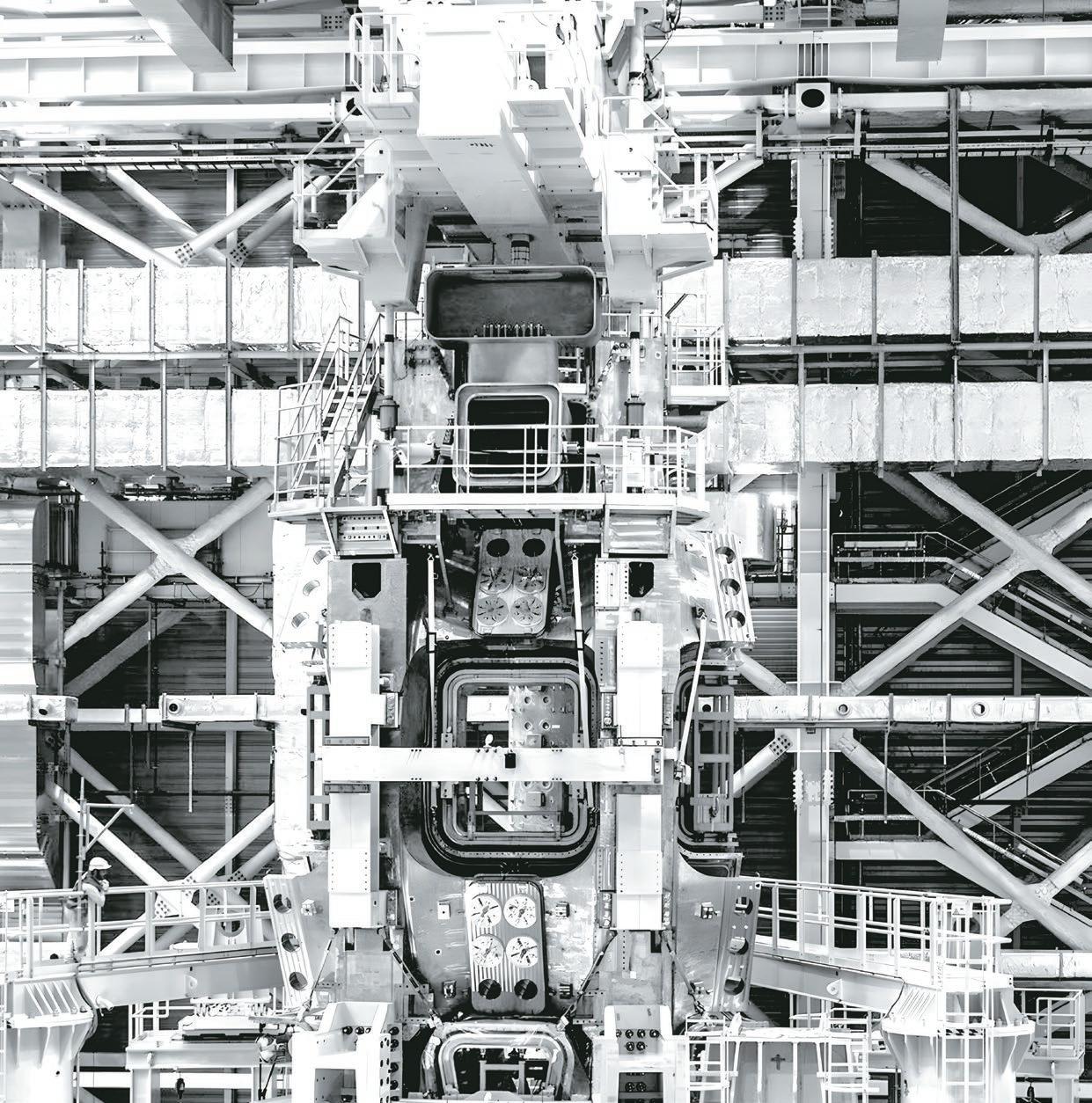











❱ Submit baseline proposal to the ITER Council
❱ Engage with the French nuclear safety authority ASN for the new licensing roadmap
❱ Complete preparation of the matrixed organizational structure
❱ Align the ITER Research Plan to the new Baseline
❱ Pursue experiments and modelling for the tungsten first wall
❱ Carry out bevel joint repair on vacuum vessel sectors #7 and #6
❱ Receive first repaired sets of thermal shield
❱ Restart vacuum vessel sector sub-assembly
❱ Receive final poloidal field coil from Europe
❱ Host celebration for the completion of all toroidal field coils
❱ Organize private/public fusion workshop at ITER
❱ Begin the development of the ITER Design Handbook
❱ Introduce new corporate values
